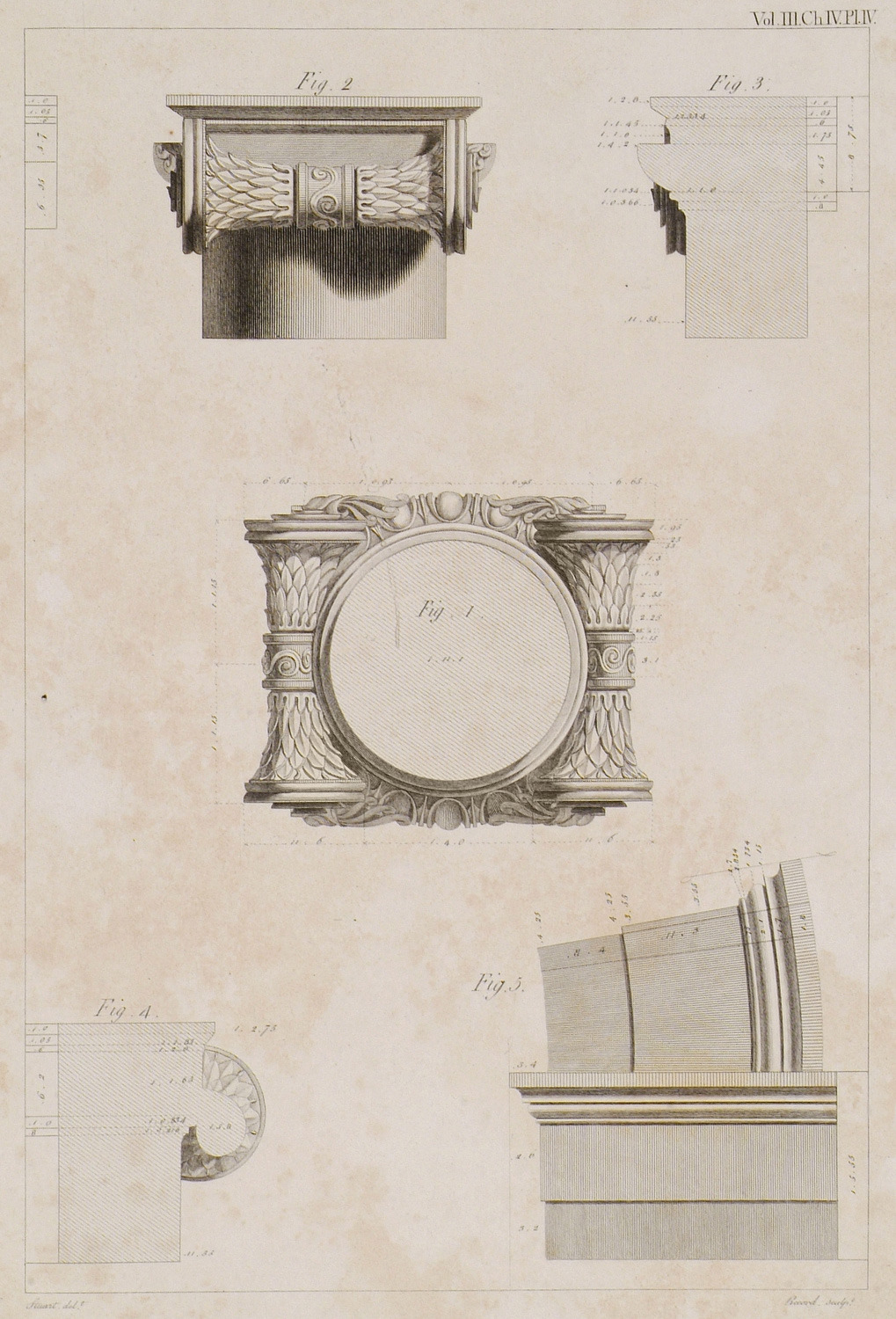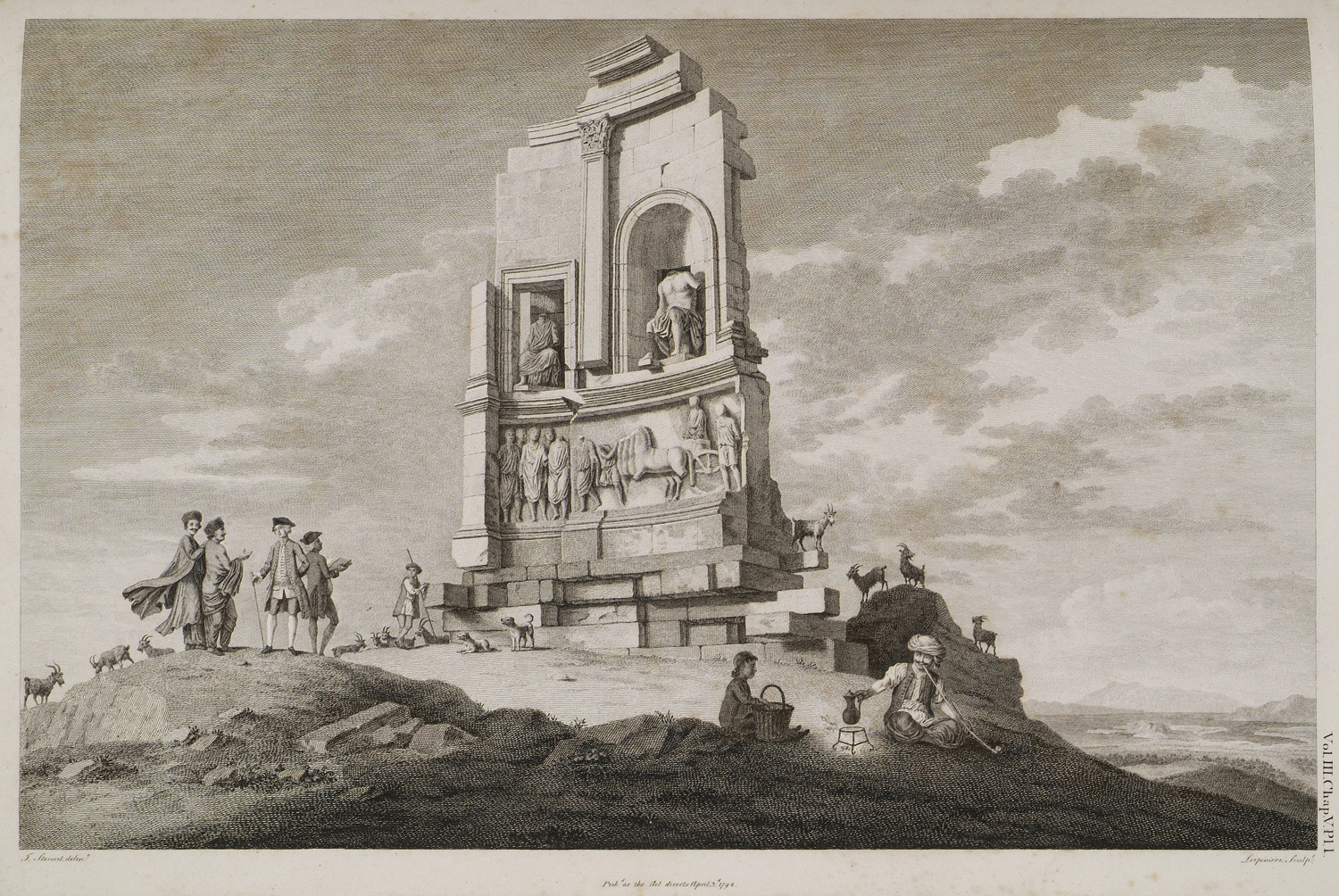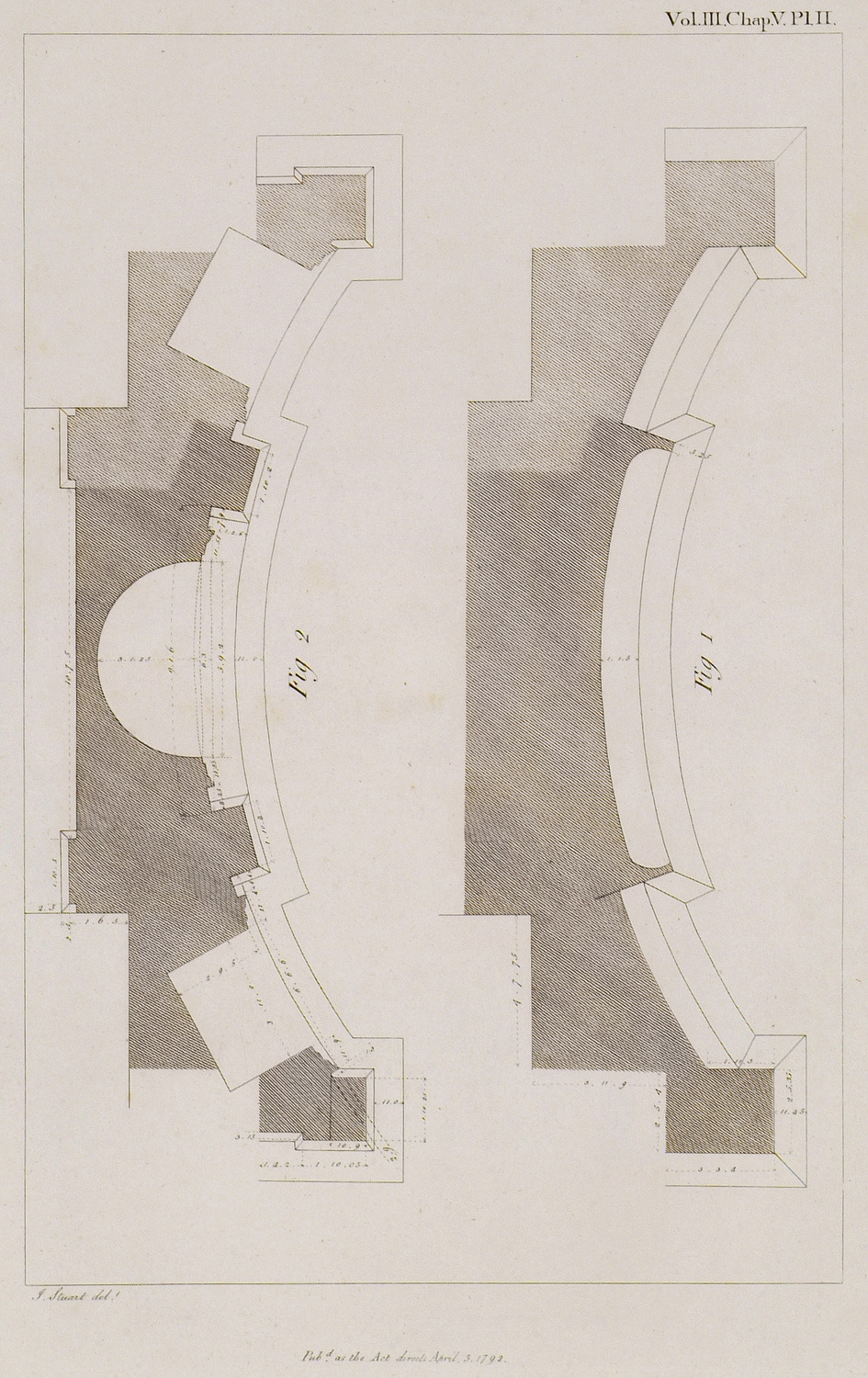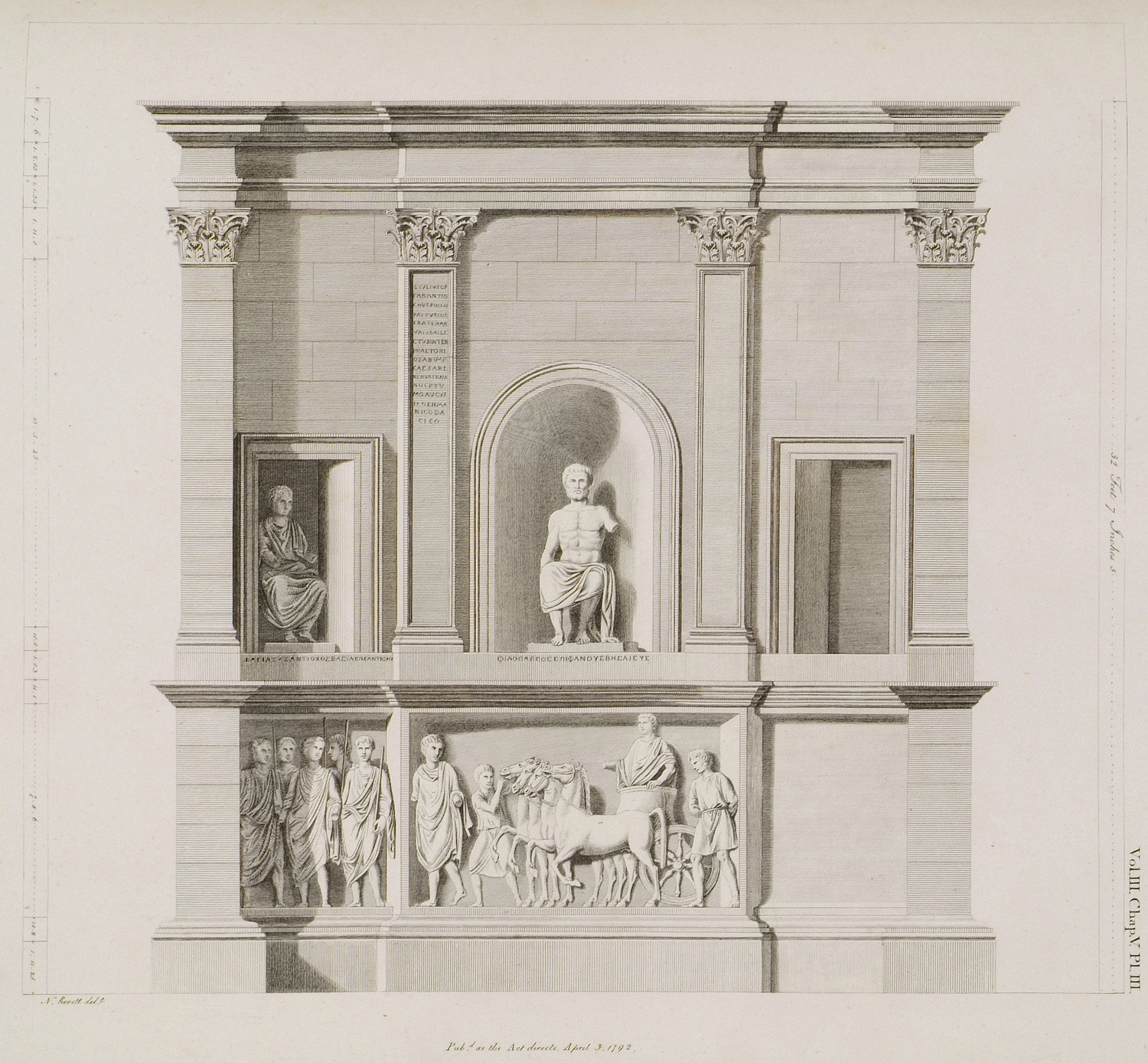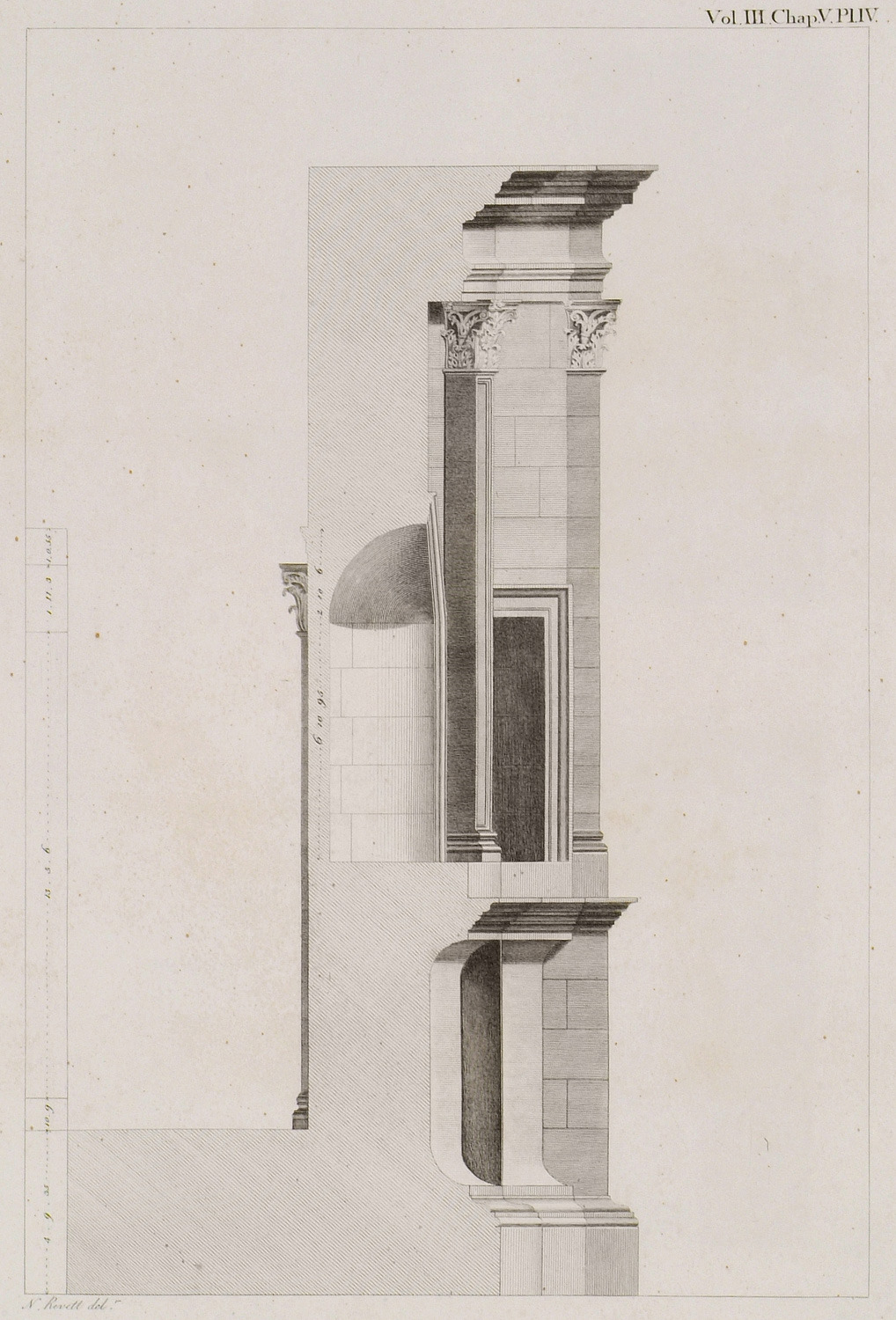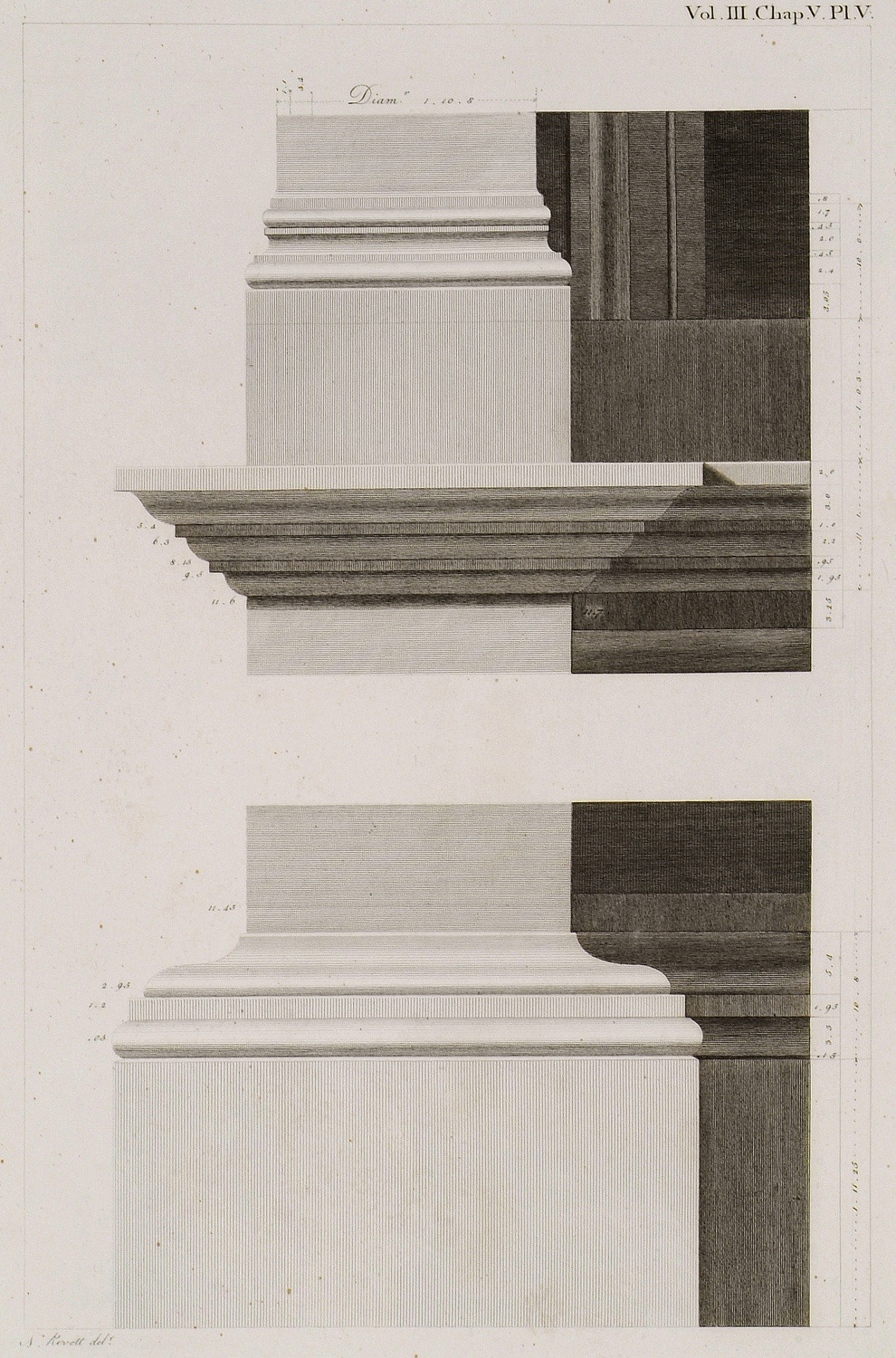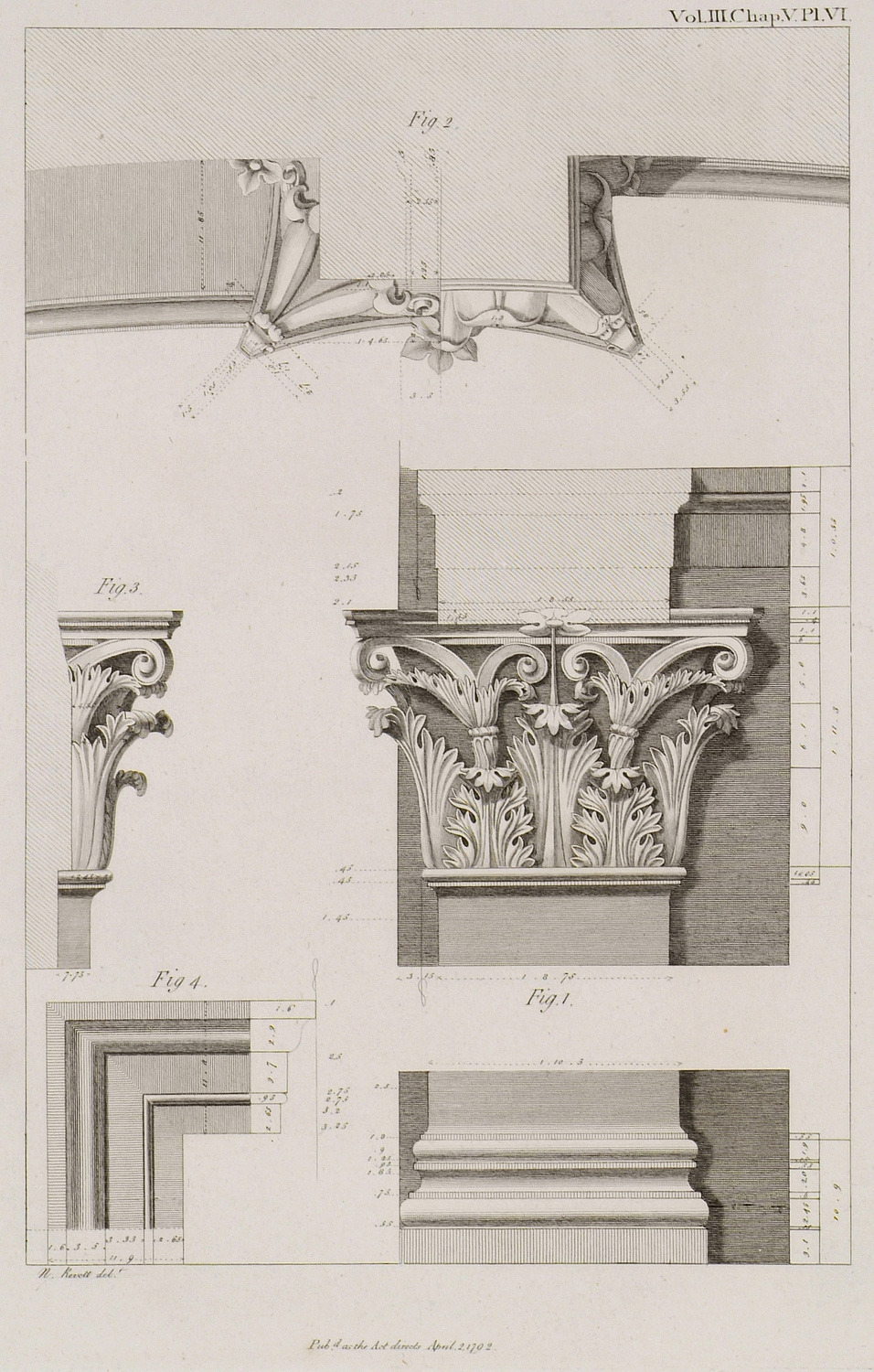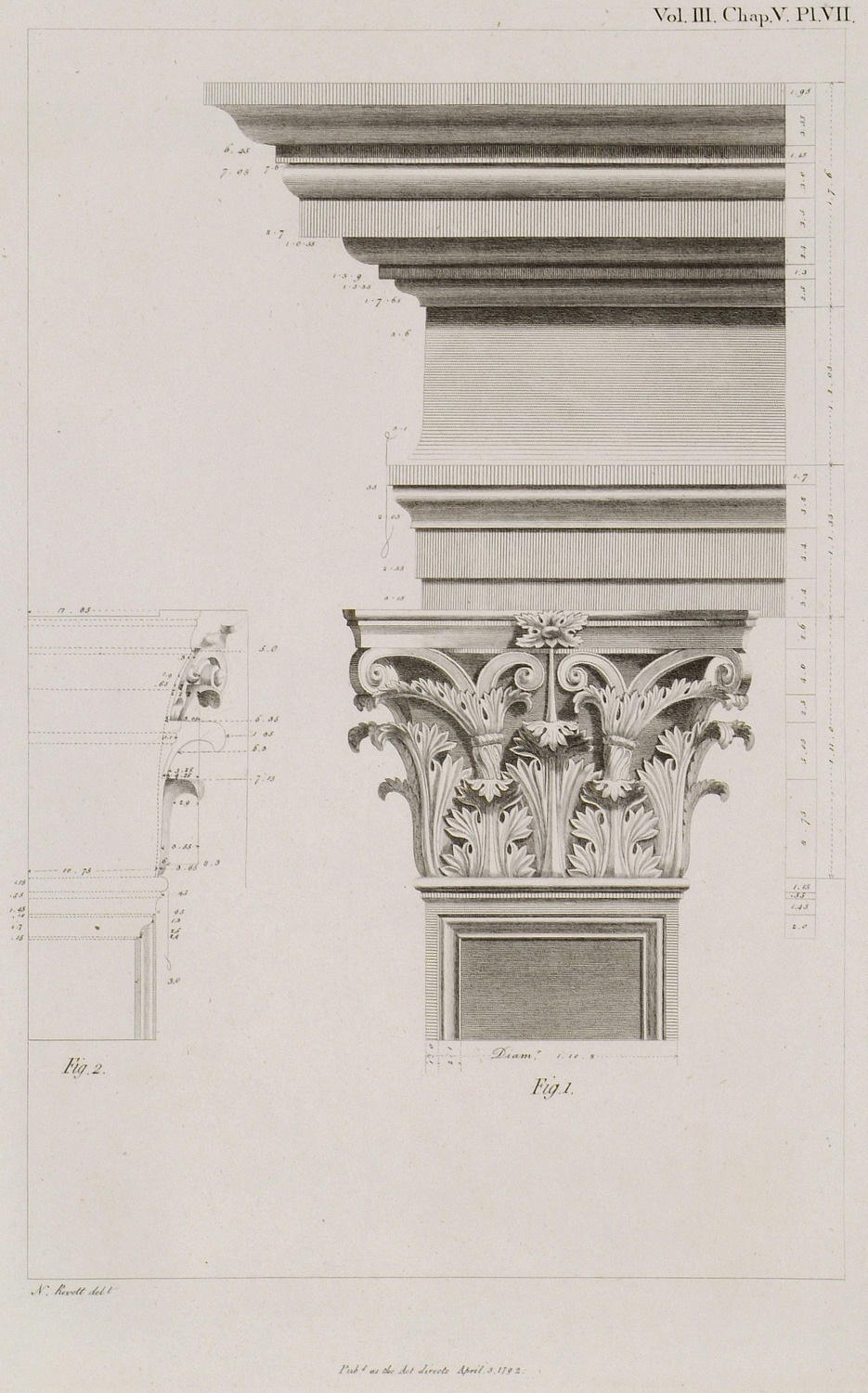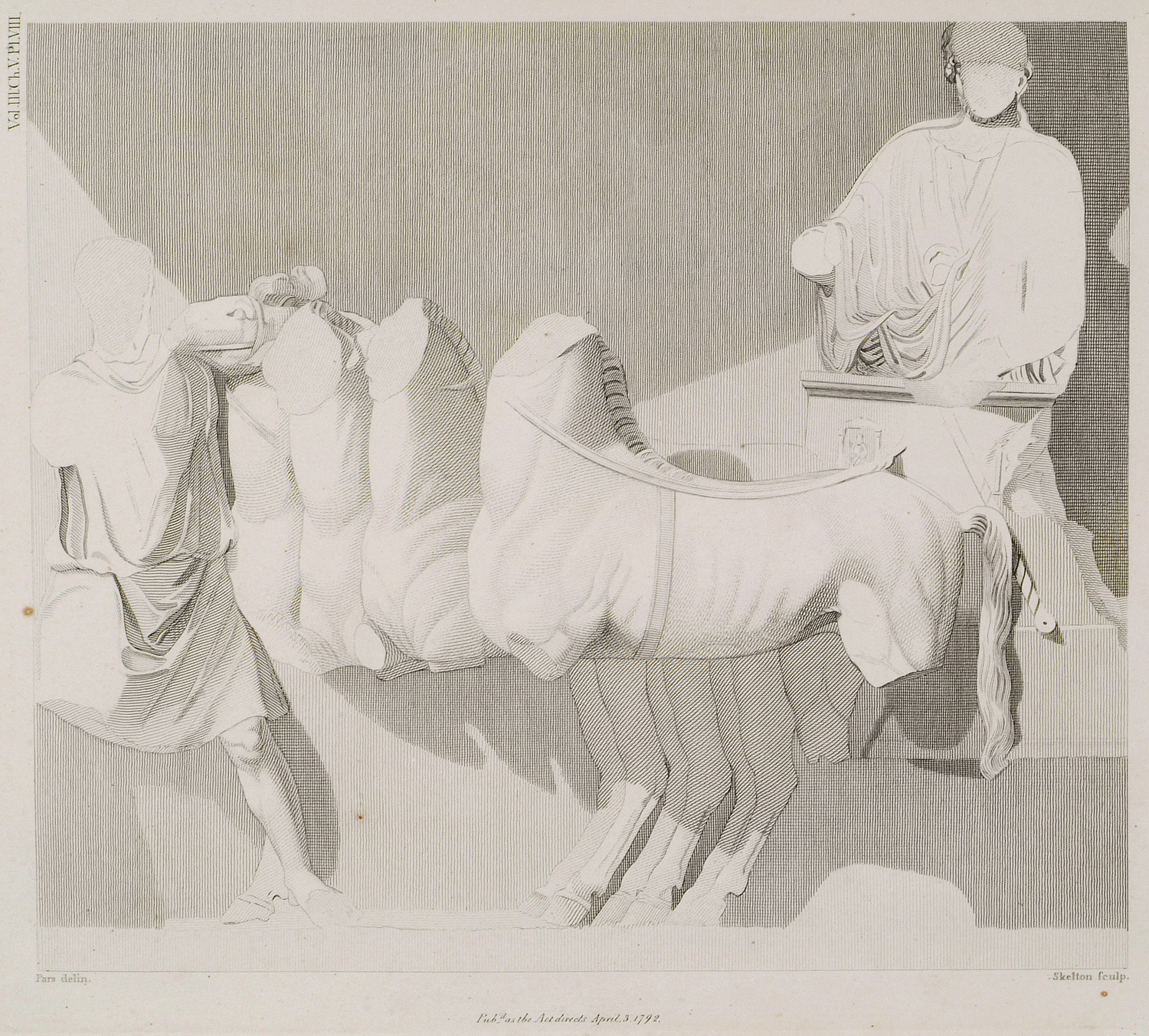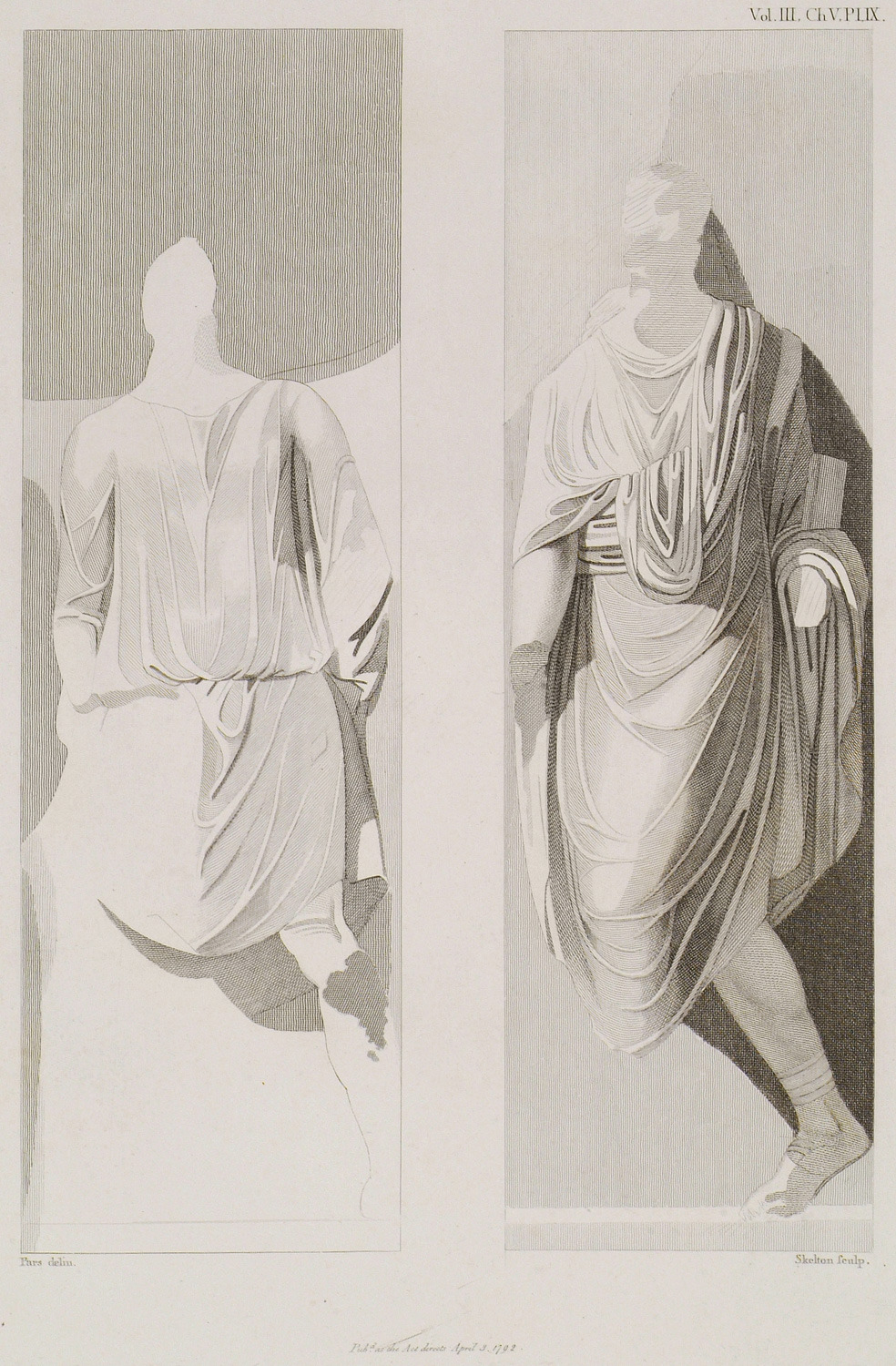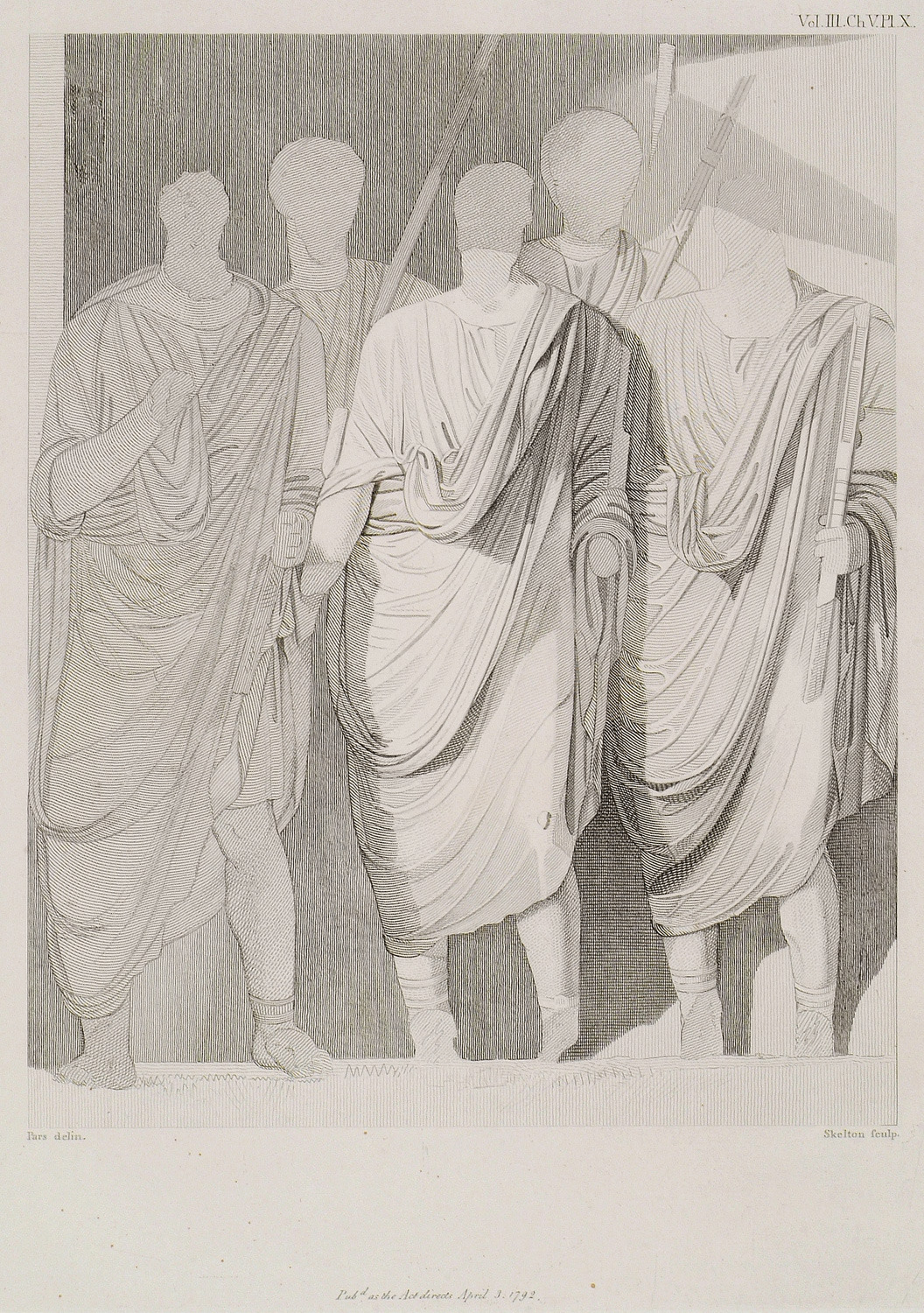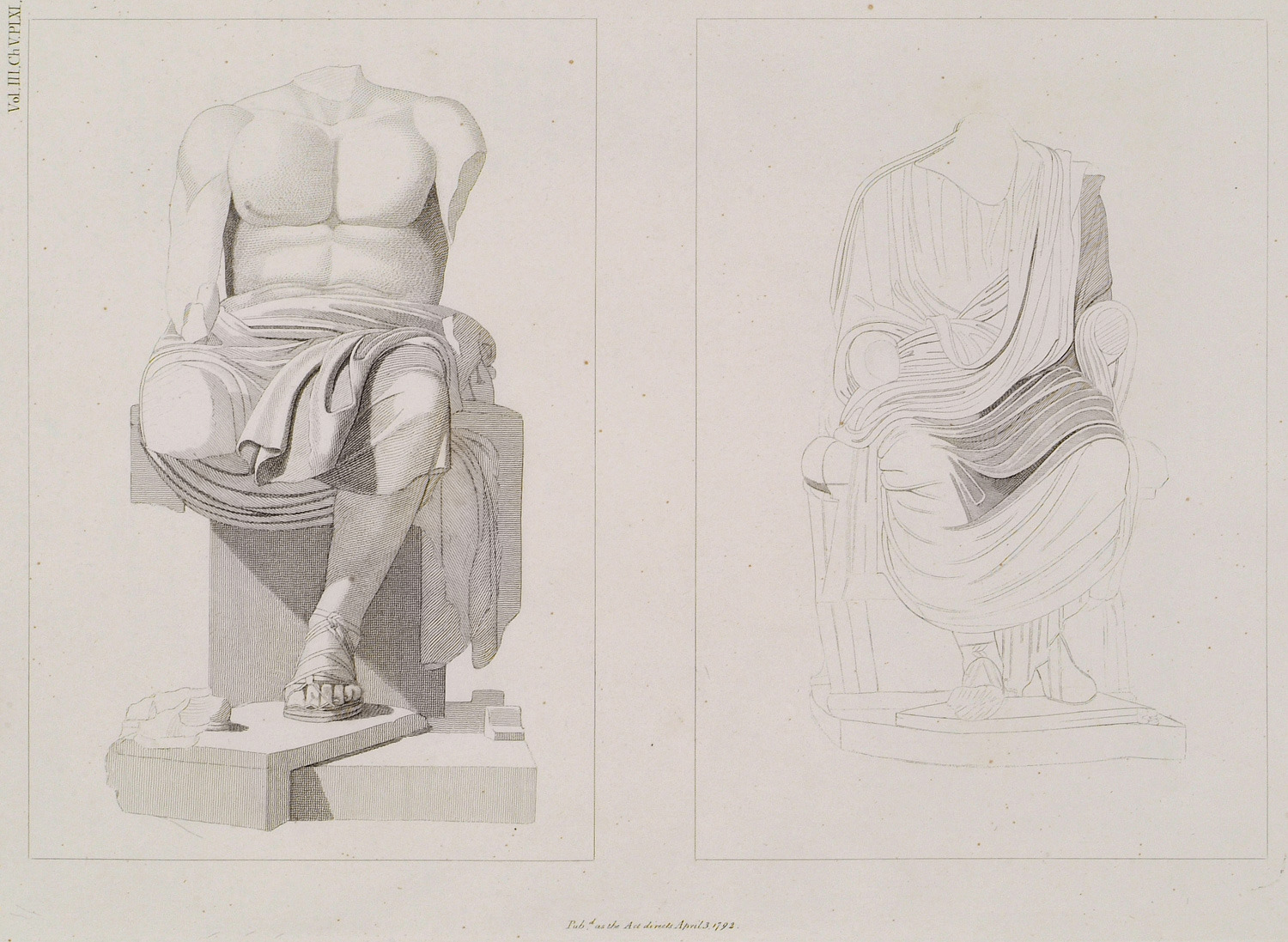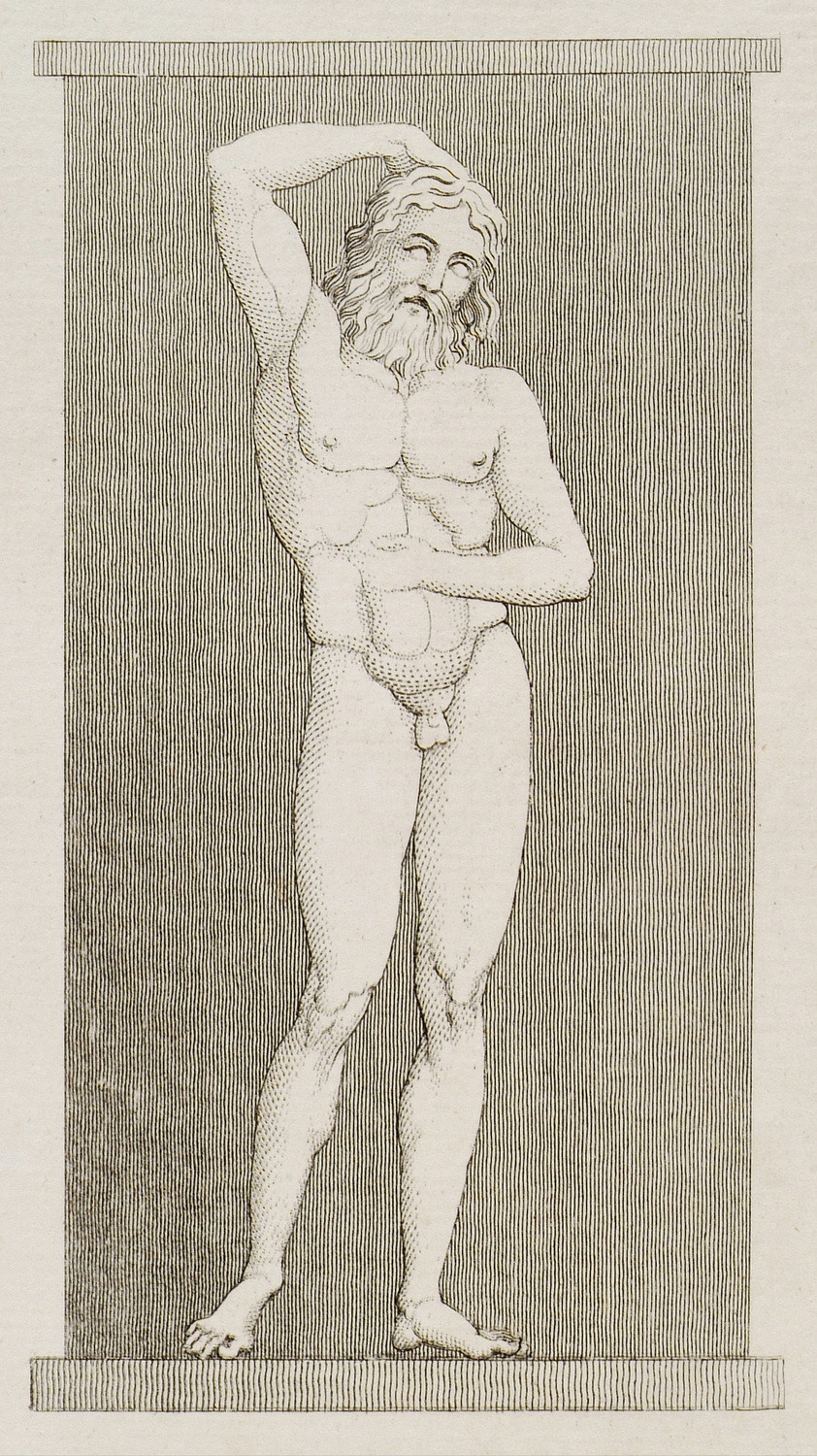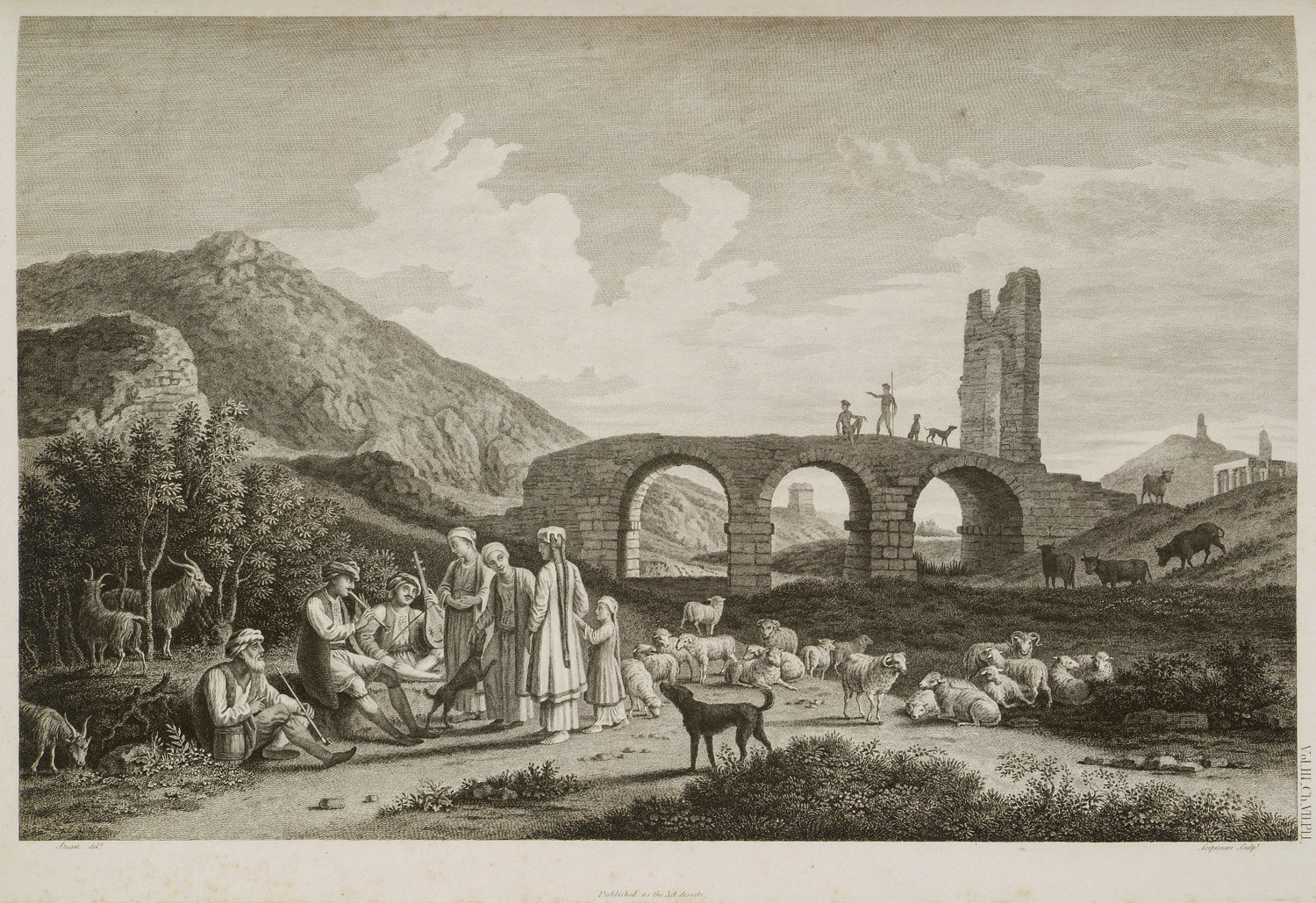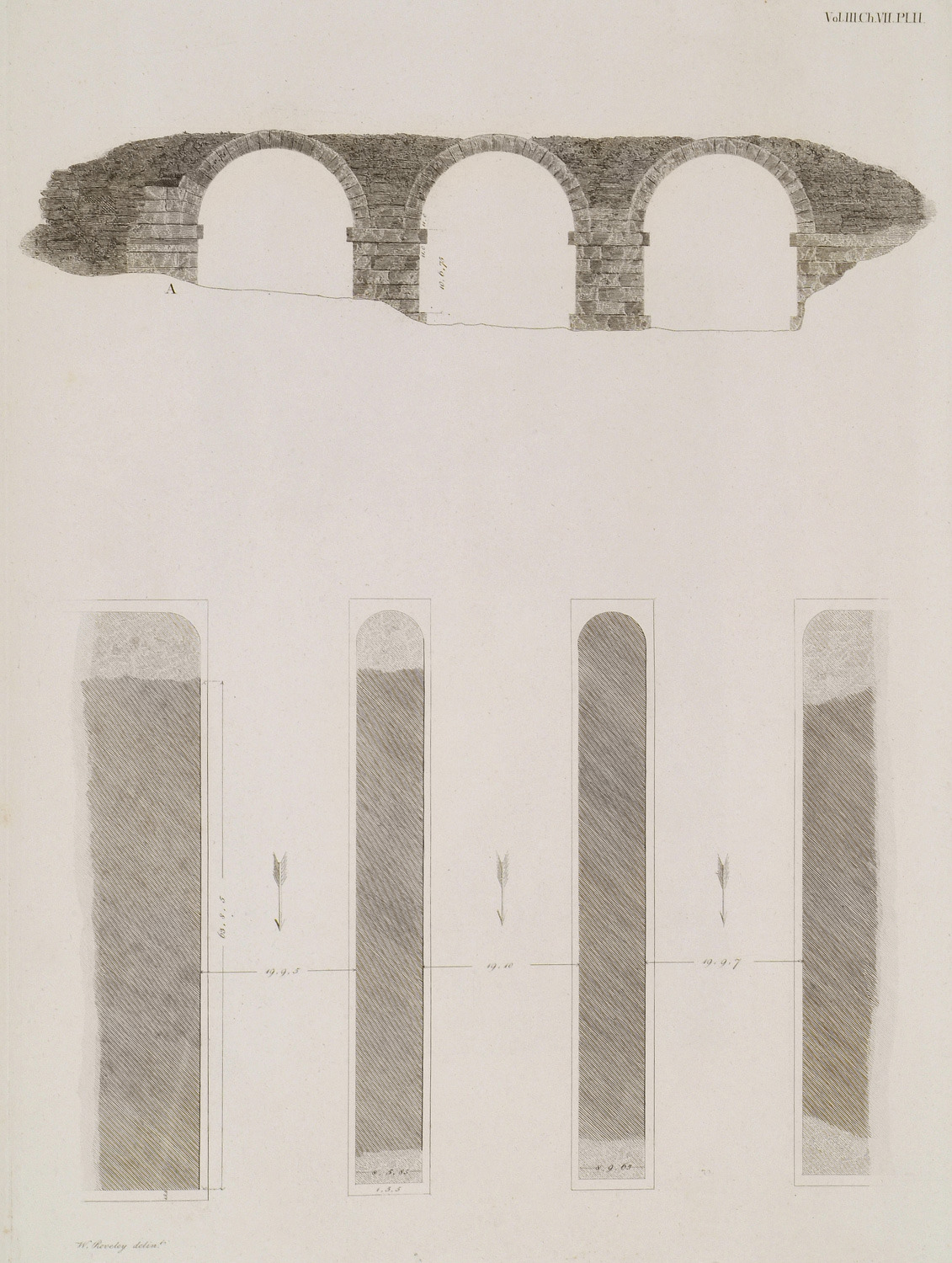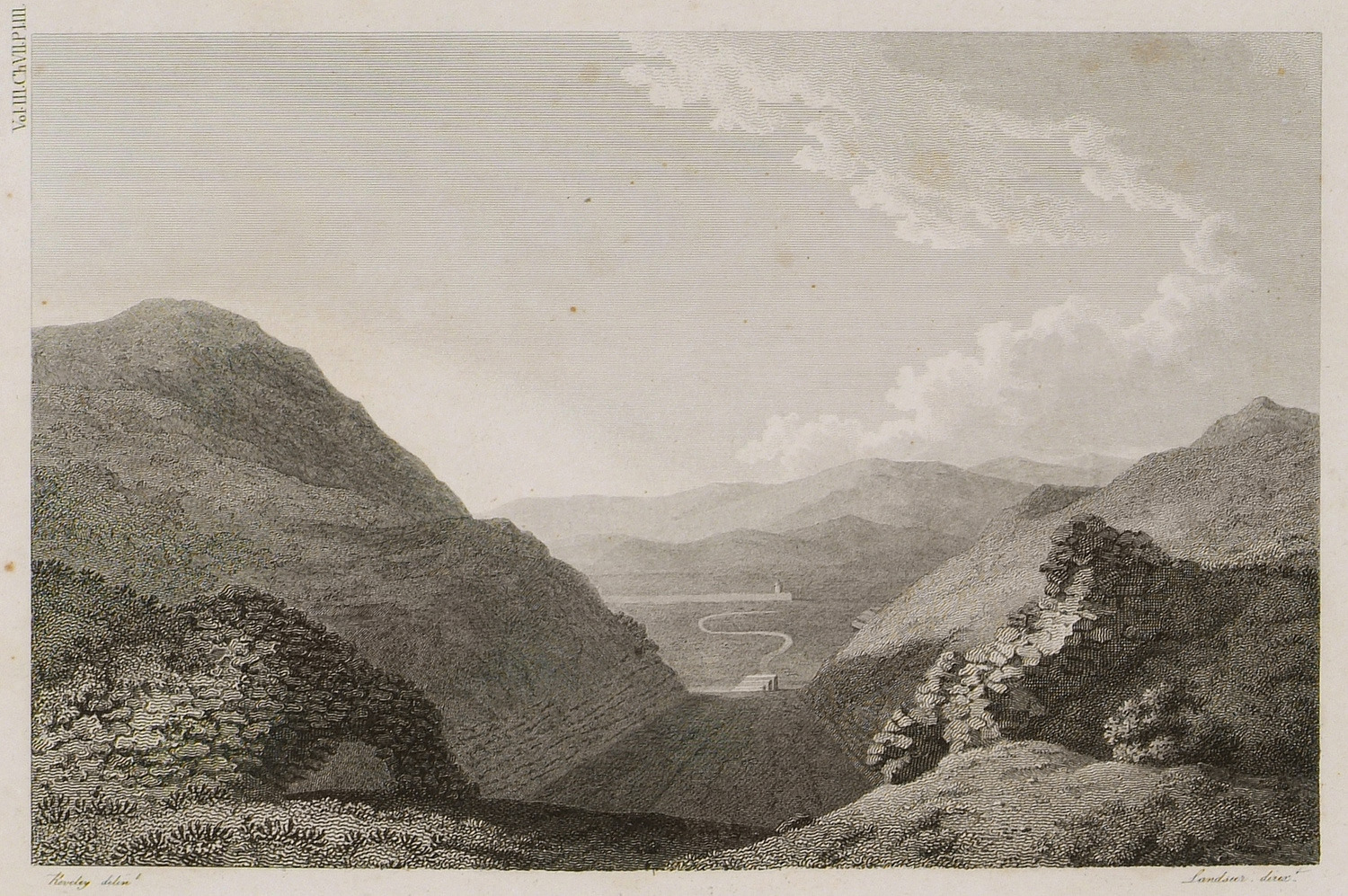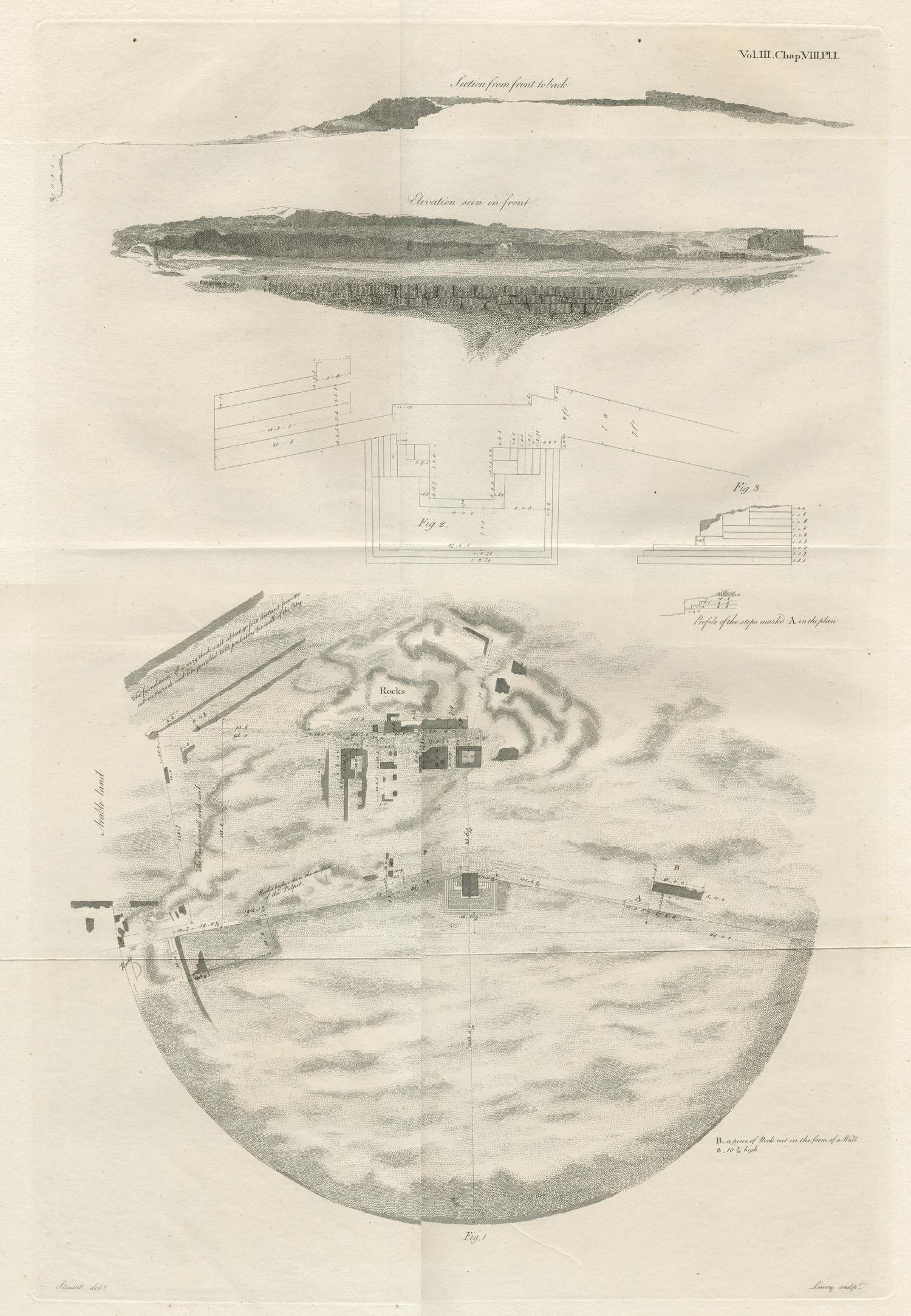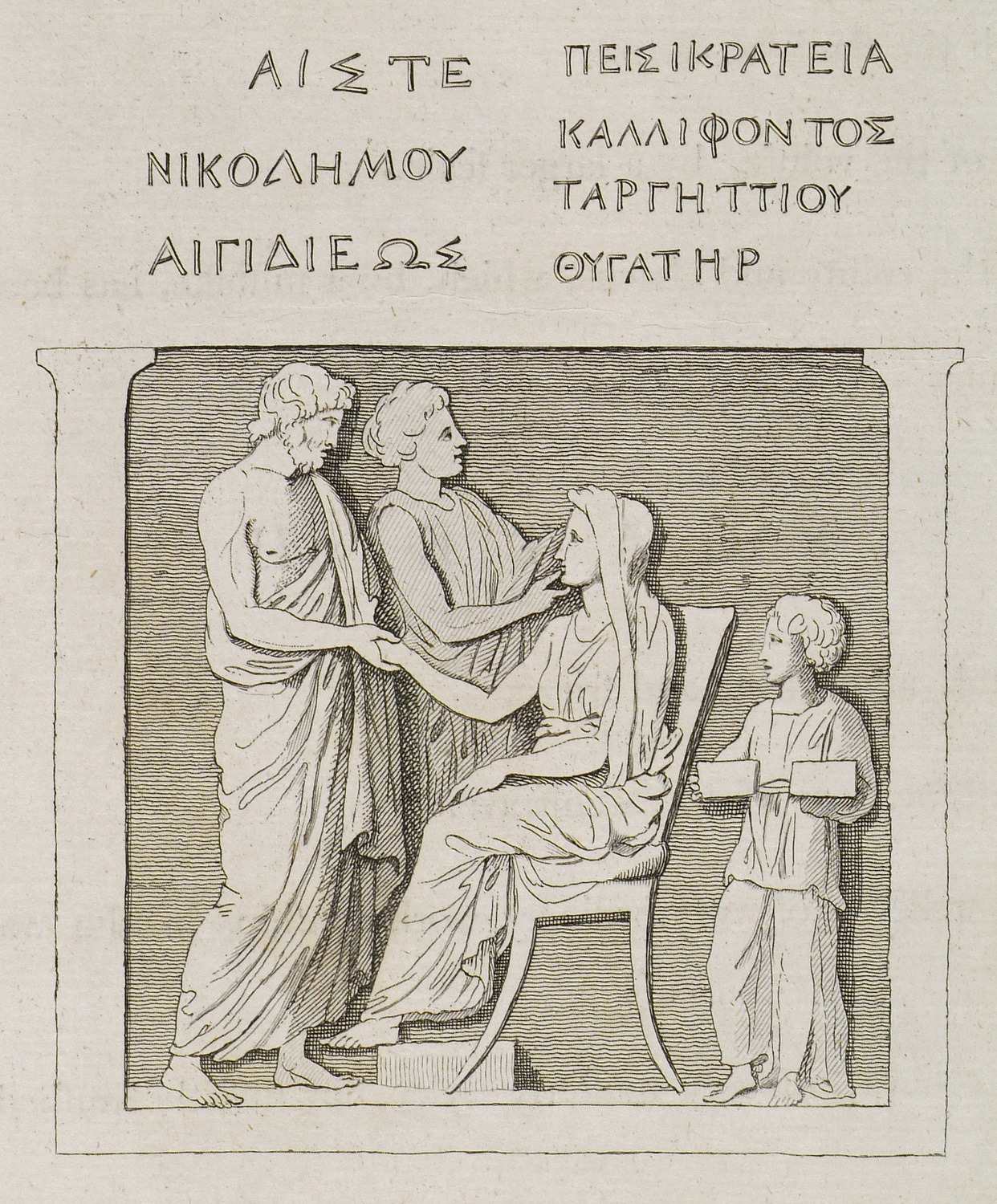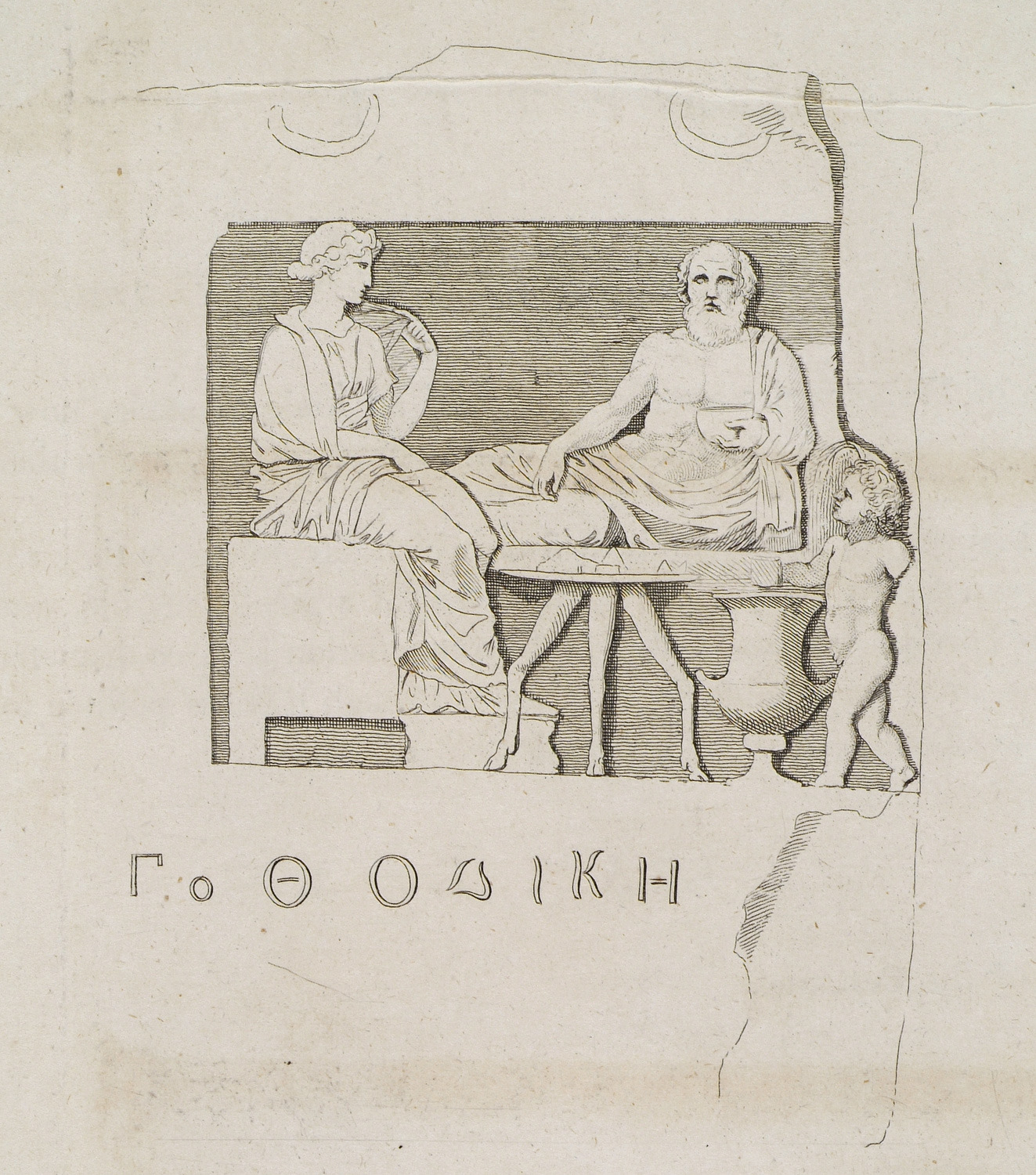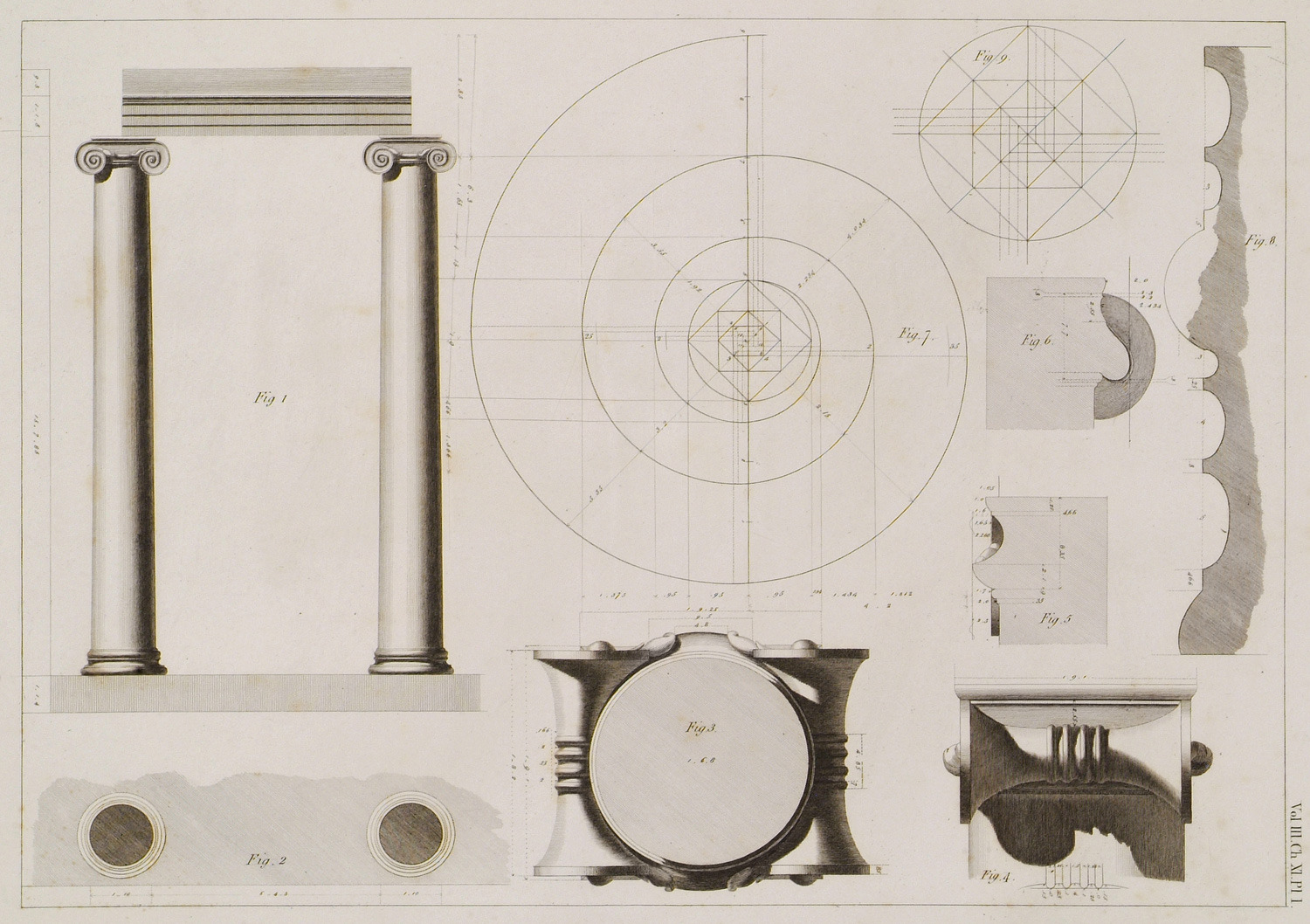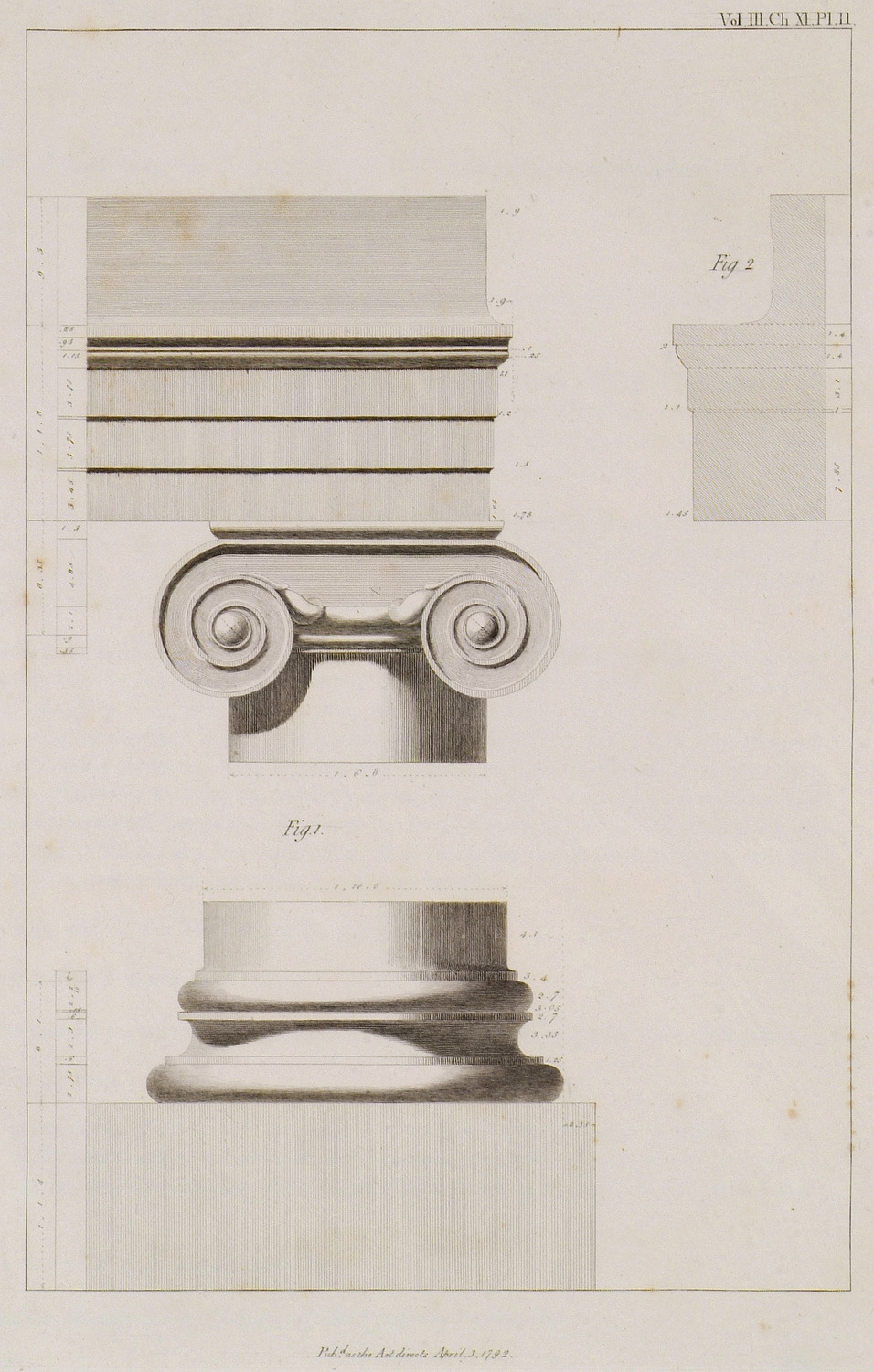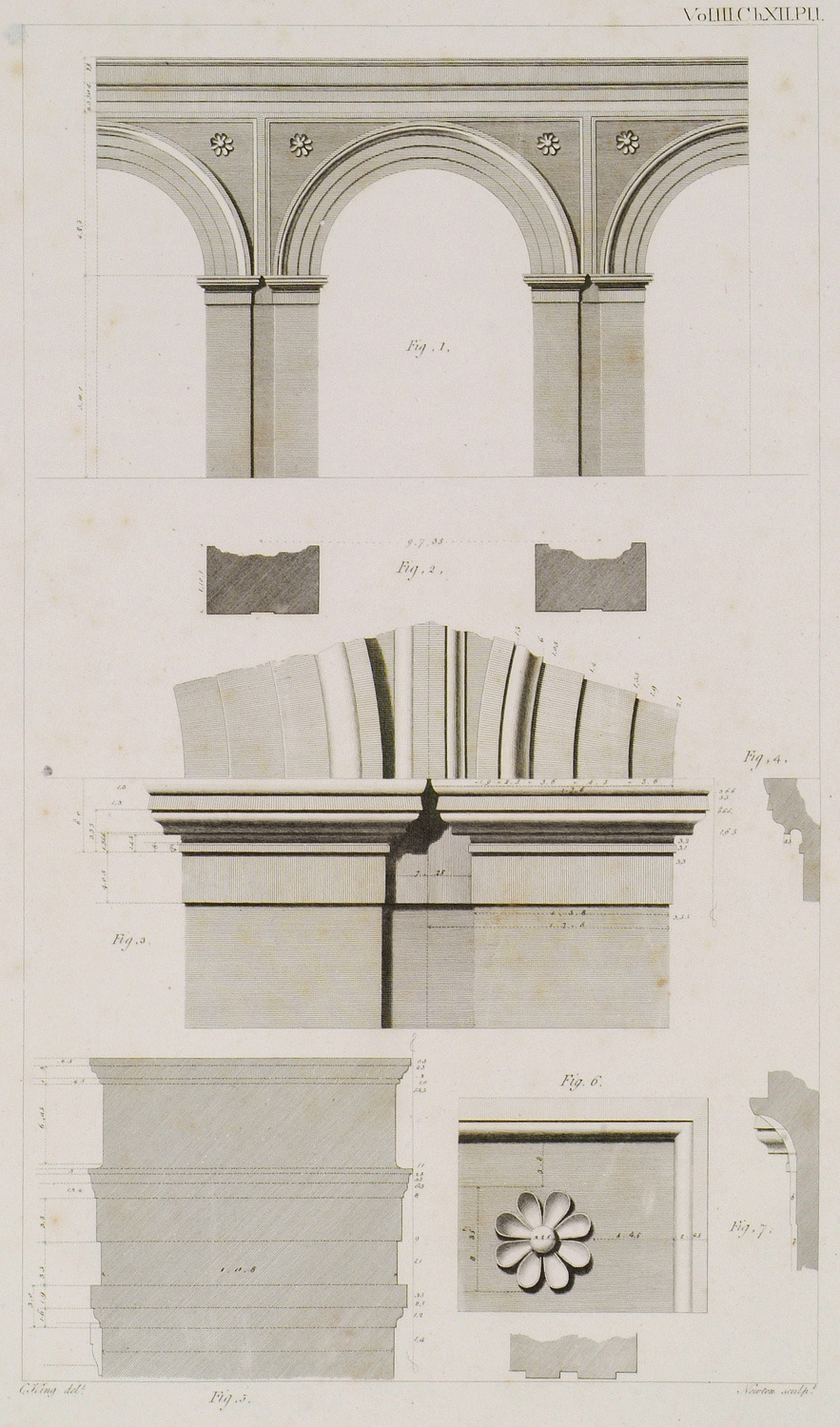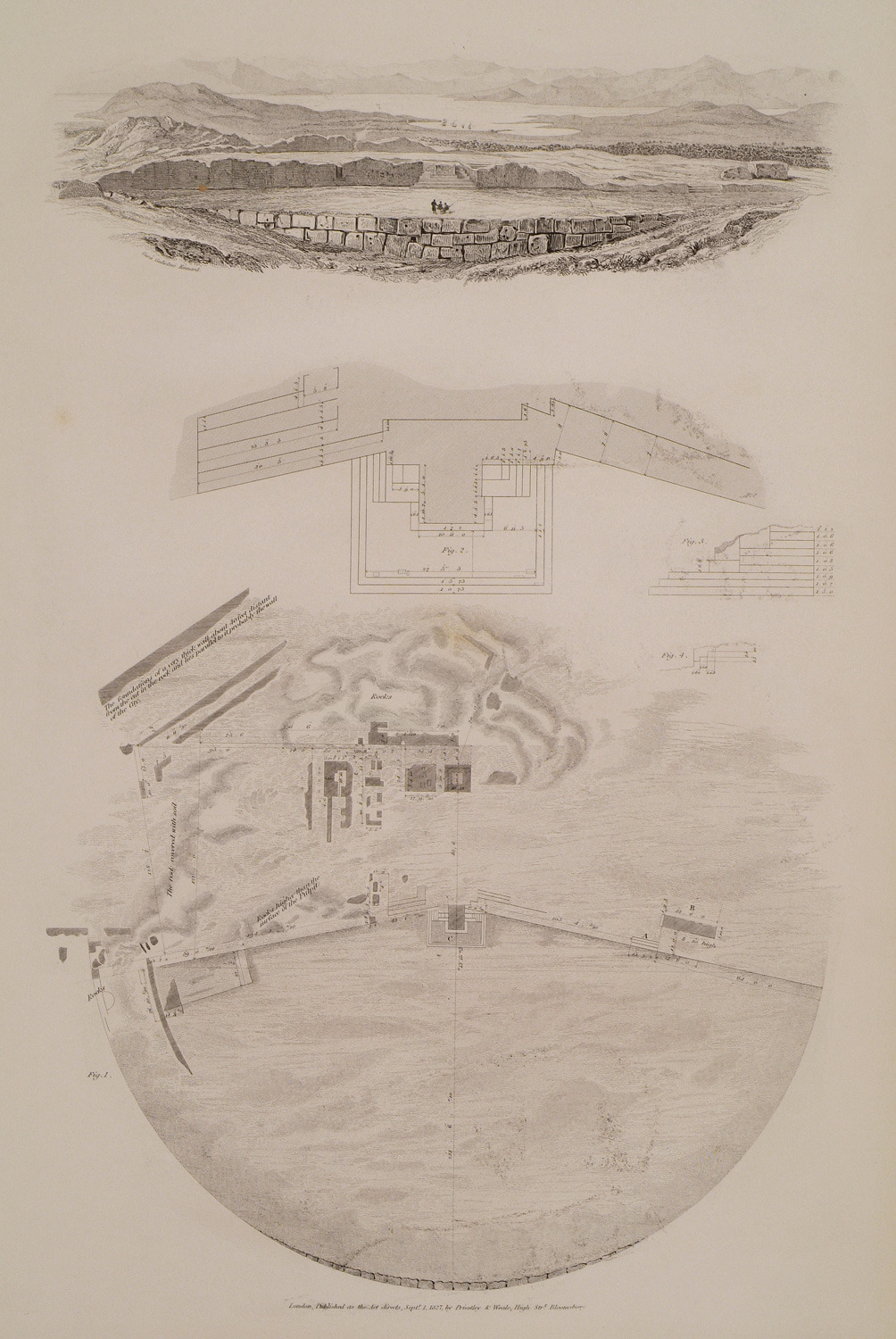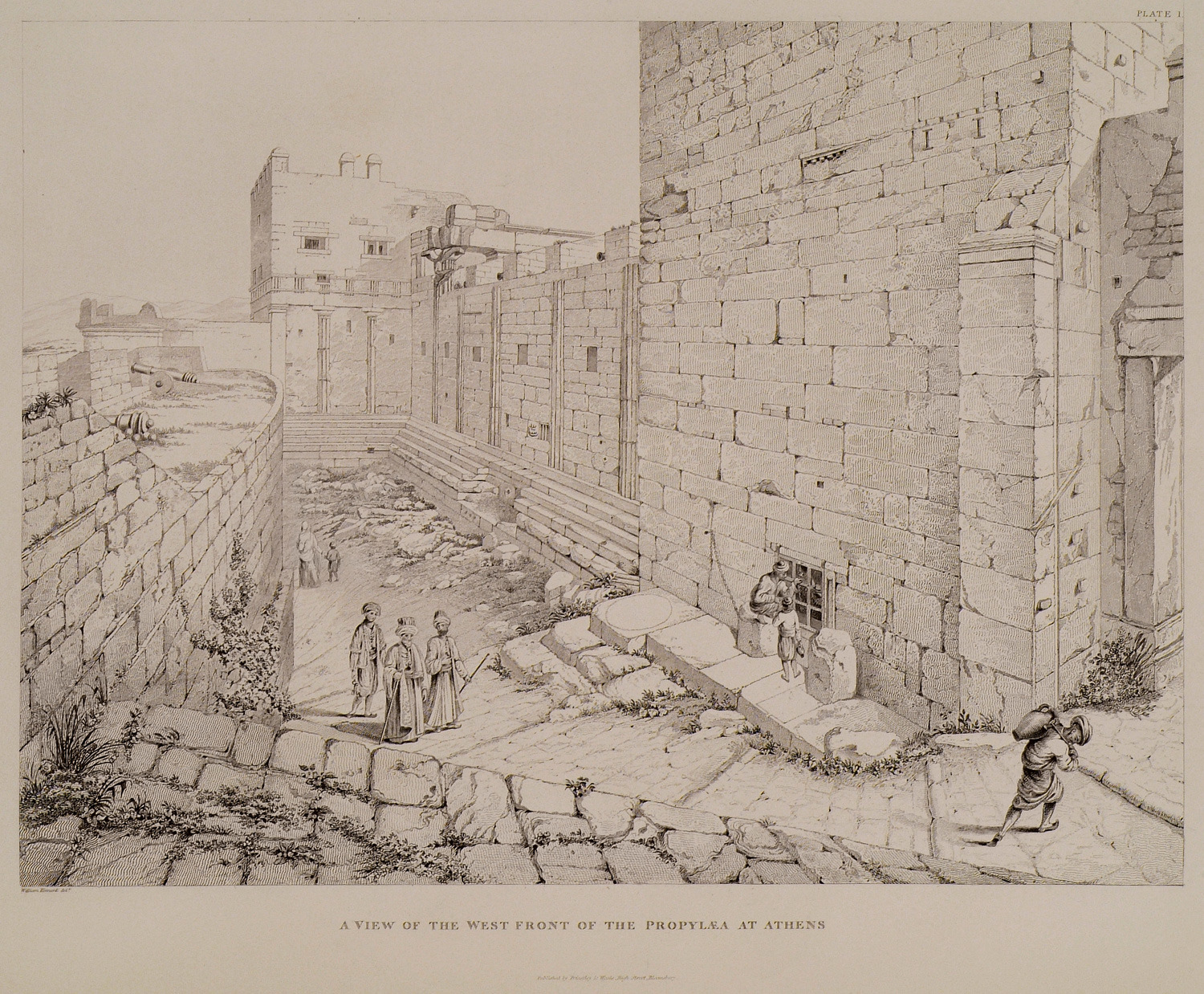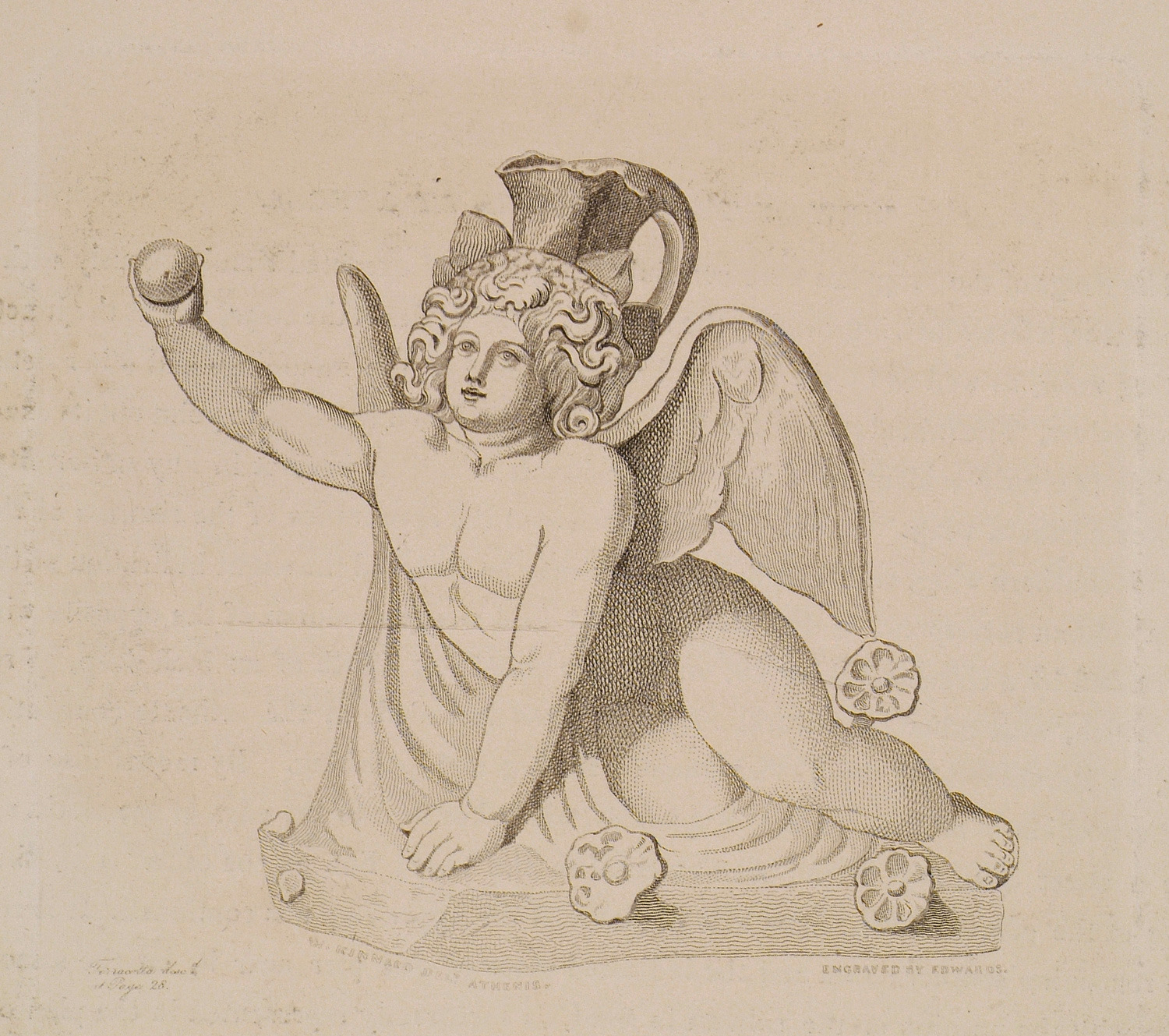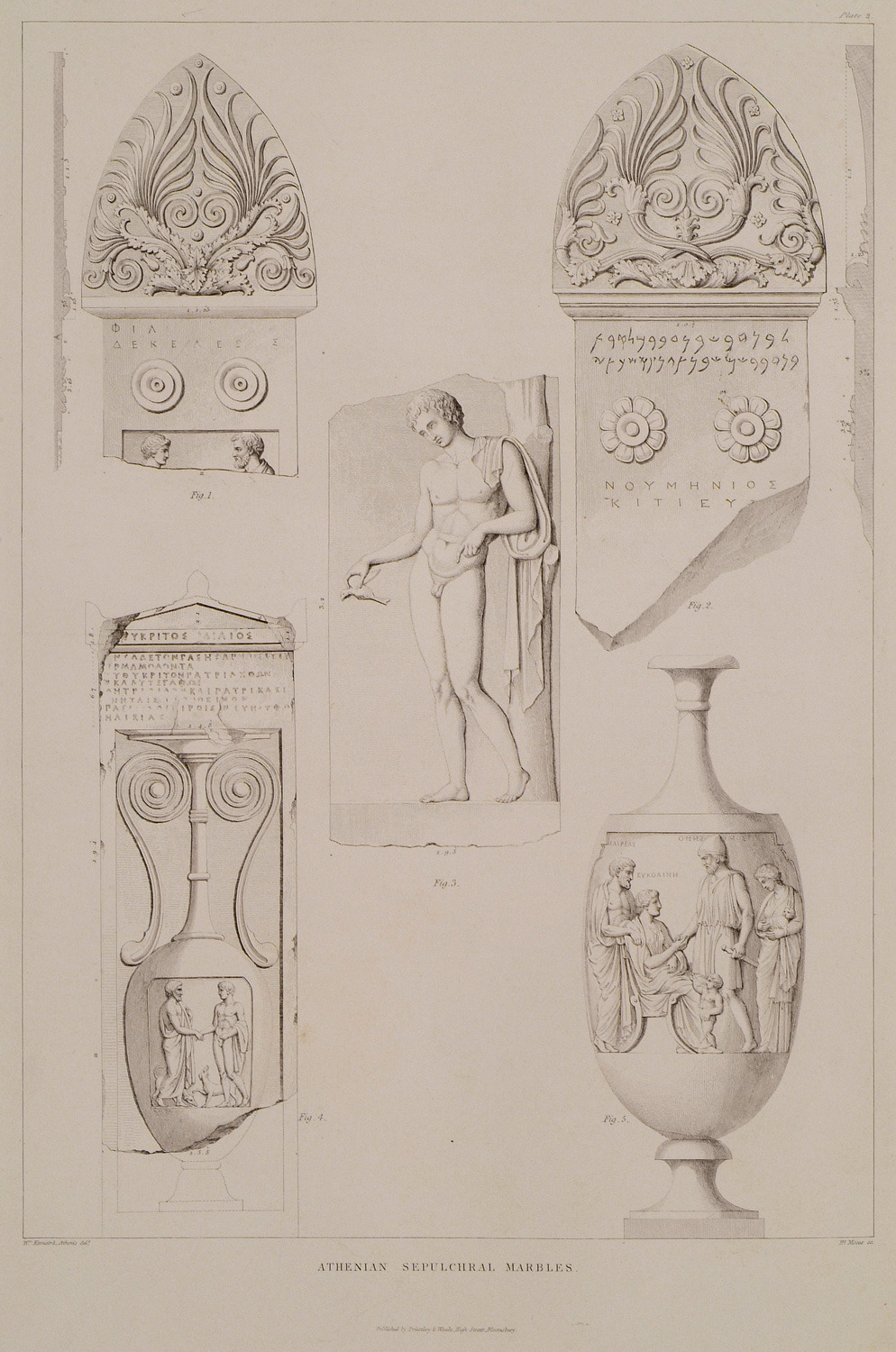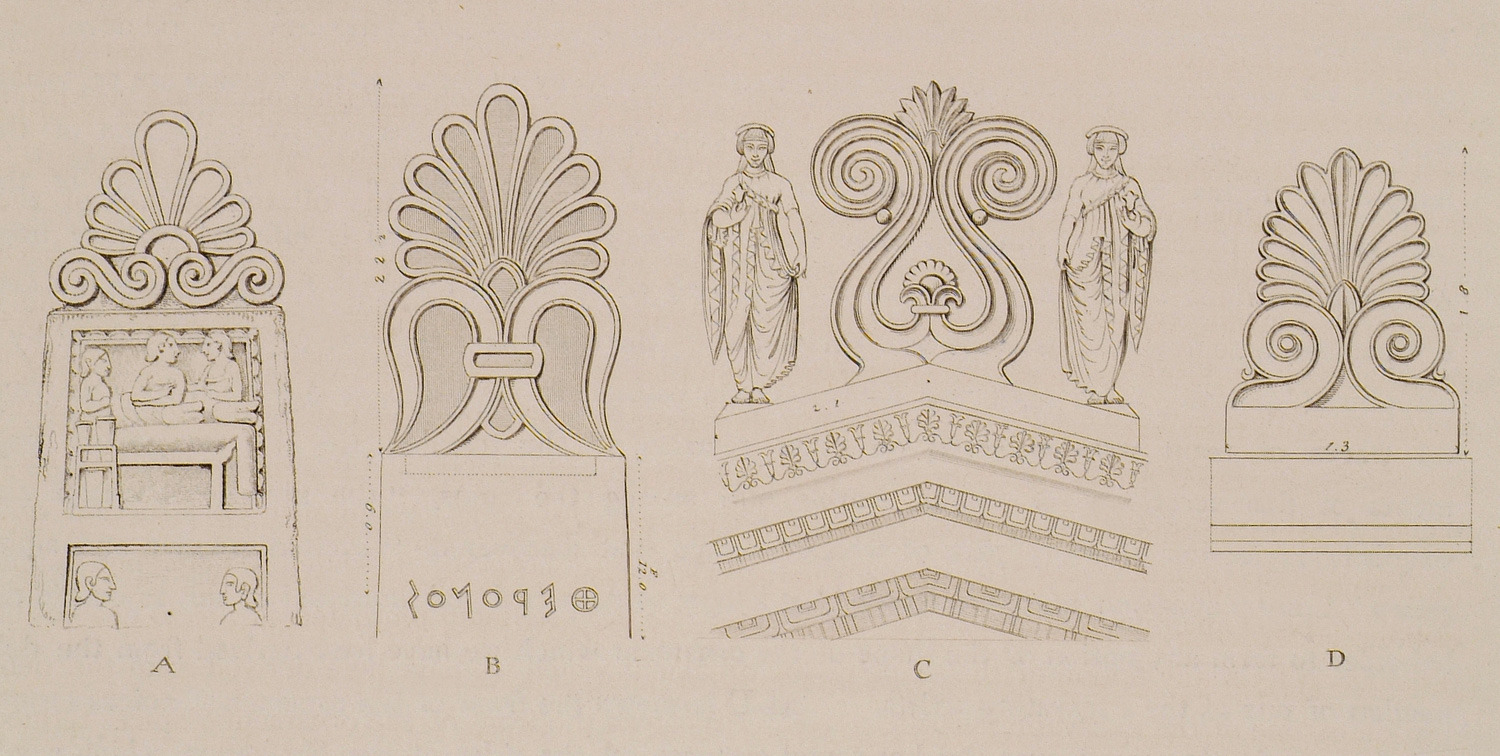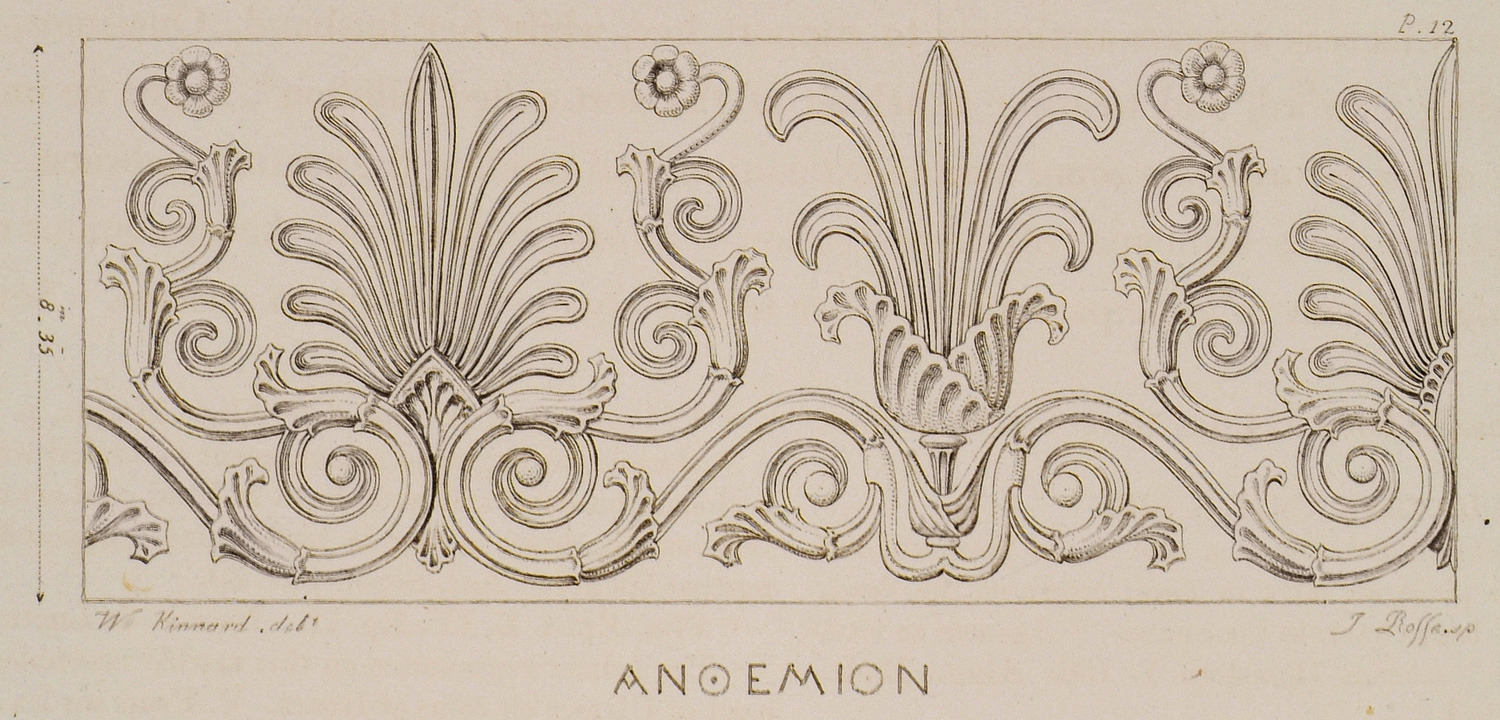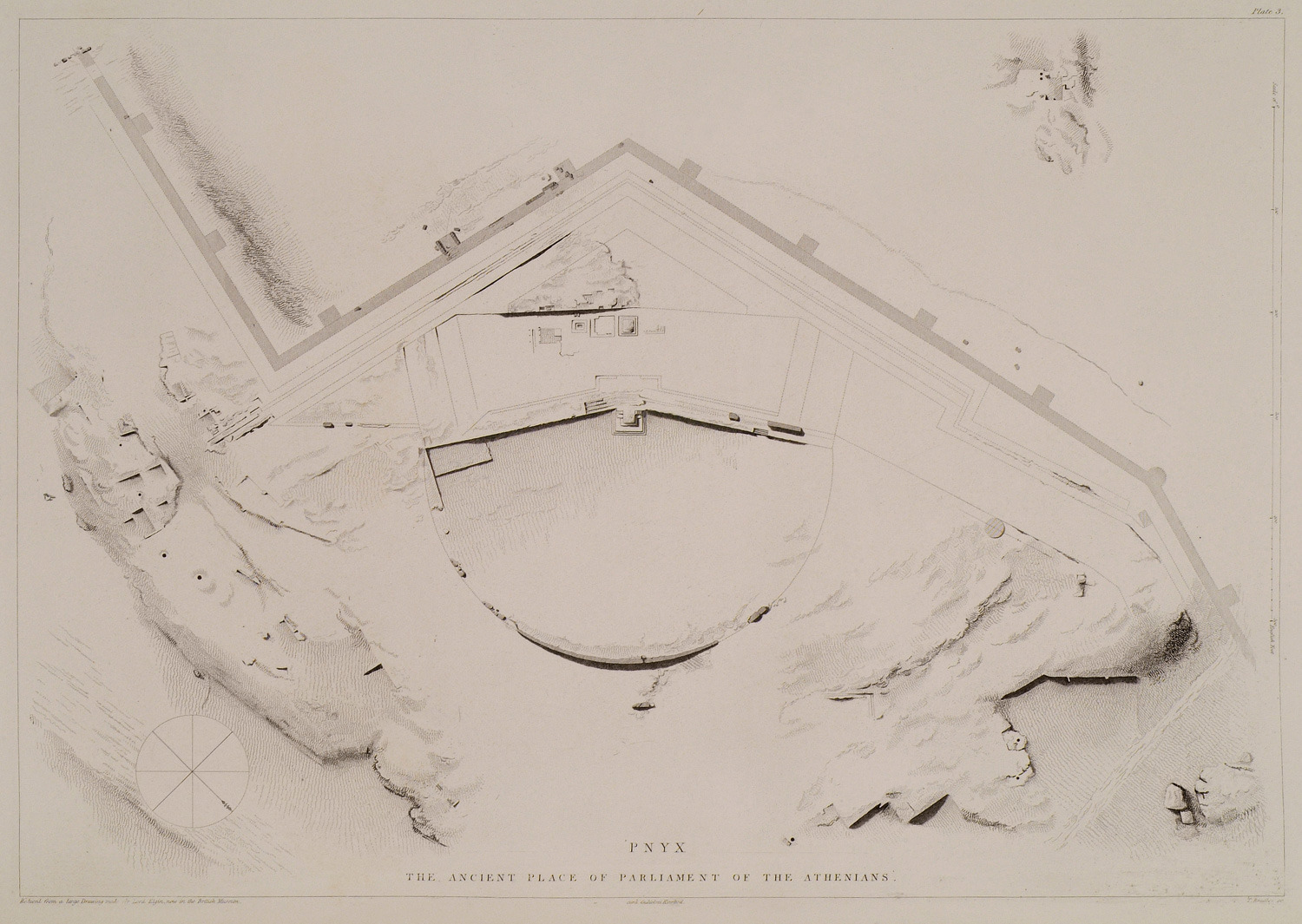Attica (1797 Subjects)
Aqueduct of Hadrian (Dexameni), Athens: Fig. 1. The capital reversed. Fig. 2. The side of the capital. Fig. 3. The section through the front of the capital. Fig. 4. The section through the side of the capital. Fig. 5. The mouldings of the architrave and of the arch.
The monument of Philopappus in Athens. James Stuart, Nicholas Revett, James Dawkins and Robert Wood are studying the monument. The Janissary who escorts them is preparing coffee. A shepherd with his goats. The Saronic gulf in the background.
Monument of Philopappus, Athens: Fig. 1: Plan of the basement. Fig. 2: Plan of the part decorated with pilasters and niches.
Reconstruction of the Monument of Philopappus in Athens.
Monument of Philopappus, Athens: A transverse section through the middle of the monument.
Monument of Philopappus, Athens: The mouldings of the basement, with the base of the Corintihian pilasters.
Monument of Philopappus, Athens: Fig. 1. The base, capital and architrave of the pilaster, in the back front. Fig. 2. The plan of the capital reversed. Fig. 3. The profile of the capital. Fig. 4. The mouldings of the niches in the curved front.
Monument of Philopappus, Athens: Fig. 1. The capital and entablature of the curved or principal front. Fig. 2. Section of the capital.
Monument of Philopappus, Athens: The central part of the basso relievo under the middle niche; Philopappus is proclaimed consul of Athens.
Monument of Philopappus, Athens: Philopappus is proclaimed consul of Athens.
Monument of Philopappus, Athens: Philopappus is proclaimed consul of Athens.
Monument of Philopappus, Athens: Philopappus is proclaimed consul of Athens.
Fragment from church in Athens.
Relief showing an athlete, Athens.
View of Ilissus river and the partialy destroyed bridge which led to the Panathenaic Stadium. A group of shepherds with their flock prepare to spend the night at the site.
Plan of the Roman bridge over Ilissus, with the elevation of it next to the south west.
View of the Stadium Panathenaicum, taken as standing upon the elevated part of the circular end, which is next to the south, and looking down upon it.
Pnyx: Fig. 1.The plan of the remains on the rock [...]. Fig. 2: Plan of the bema, the public speaking platform . Fig. 3. Profile of the bema.
Votive relief found on the wall of a school close to the church of Megali Panagia, Athens.
Relief found at a church at Marousi, Athens.
Roman colonnade close to the Choregic monument of Lysicrates: Fig. 1: Elevation of the columns. Fig.2: Plan of ditto. Fig.3: Plan of the capital. Fig. 4: Flank of the capital. Fig. 5: Section through the front of ditto. Fig. 6: Section through the flank of ditto. Fig.7: The spiral line of the volute, by a larger scale. Fig. 8: The section of the volute and abacus, which, by a mistake, has been put upside down. Fig. 9: Eye of the volute.
Roman colonnade close to the Choregic monument of Lysicrates: Fig. 1: The base, capital, architrave and frieze. Fig. 2: Profile of the internal face of the architrave.
Ruins of ancient building embedded into a residence, next to the Horologion of Andronikos Kyrristos (Tower of the Winds), Athens: Fig. 1: Elevation of the part remaining, which shews that there were not fewer than three arches. Fig. 2: Plan of ditto. Fig. 3: Capitals of the pilasters with the profile of the archivolt; the spandrel, which is a rose, projects equal to the upper facia of the archivolt, as shewn upon the right hand side, where the profile of the archivolt is given; but the projection of the central filet is shewn on the left from the flat surface of the spandrel. Fig. 4: Is the profile of the impost mouldings. Fig. 5: Section through the entablature, which is probably incomplete.Fig. 6: Spandrel with the rose. Fig. 7: Profile in the center between the two capitals of the pilasters, shewing the manner in which the mouldings finish against the background.
View of the Pnyx. Plan and section plan of the bema, the orator's podium. Plan of the site of the Pnyx.
The Propylaea from the west. The Ottoman commander of the city garrison (Disdar aga), with a dervish. On the right, a Greek who is held prisoner.
Ancient vase from Athenian tomb.
Fig. 1-4: Funerary steles from Athens. Fig. 5. Funerary lekythos.
Α. Etruscan palmette. Β. Ancient Athenian palmette. C. Acroterion from temple on Aegina. D. Palmette from the Parthenon.
Relief with palmettes and lotus at the annulets of the Ionian capitals of Erechtheion, at the Acropolis of Athens.
Pnyx. The ancient place of Parliament of the Athenians.


